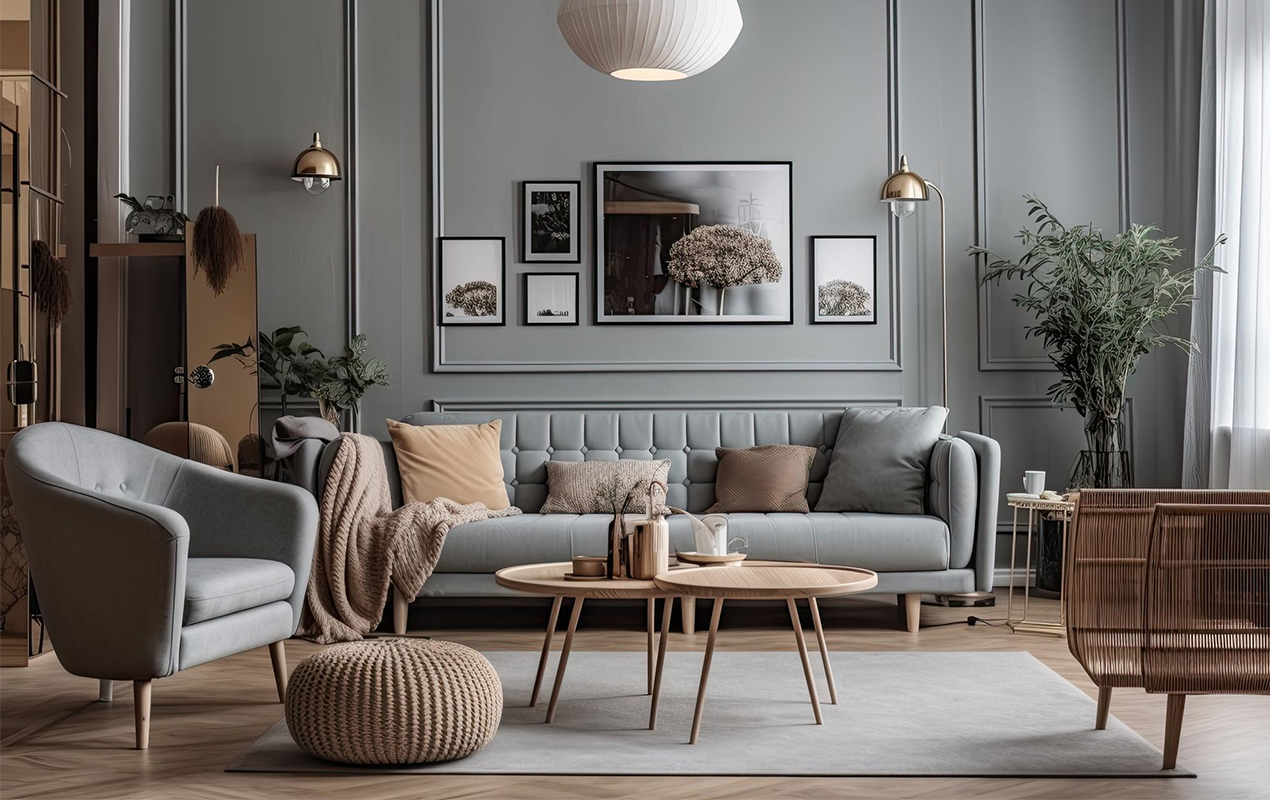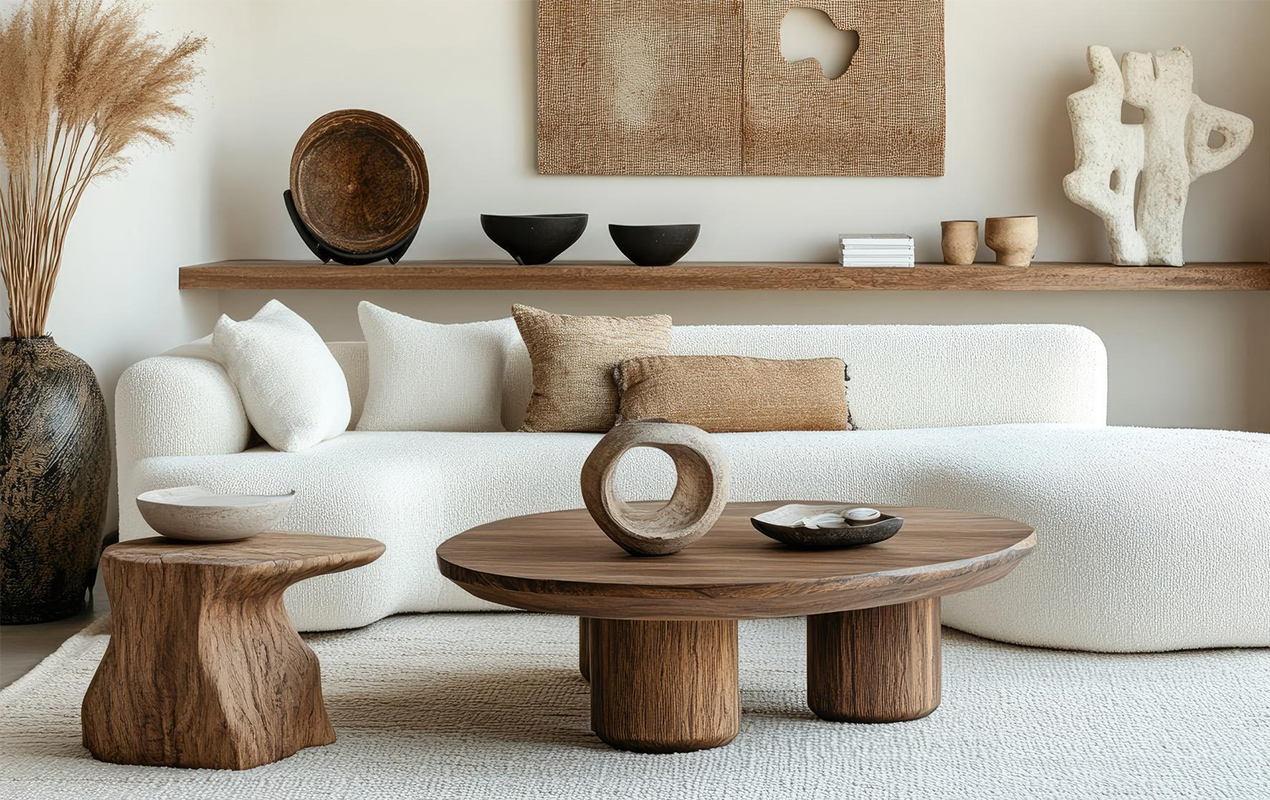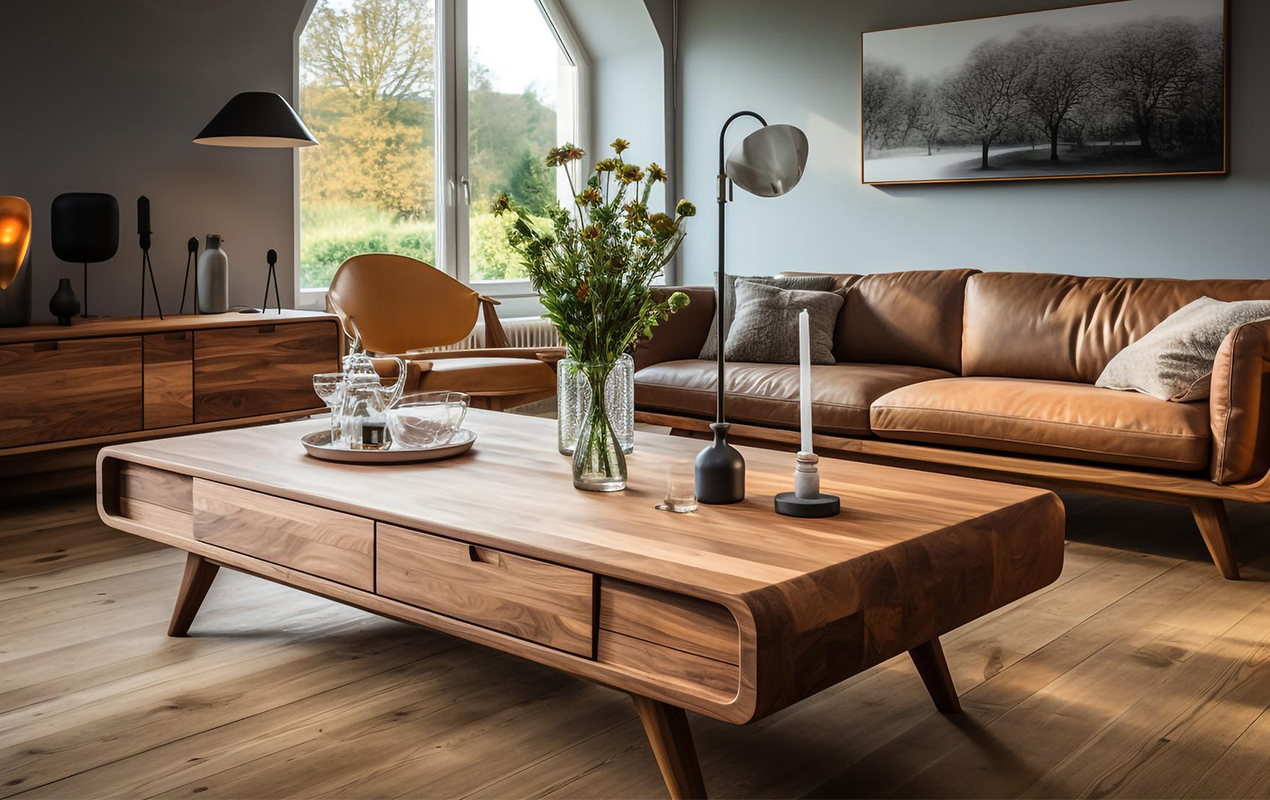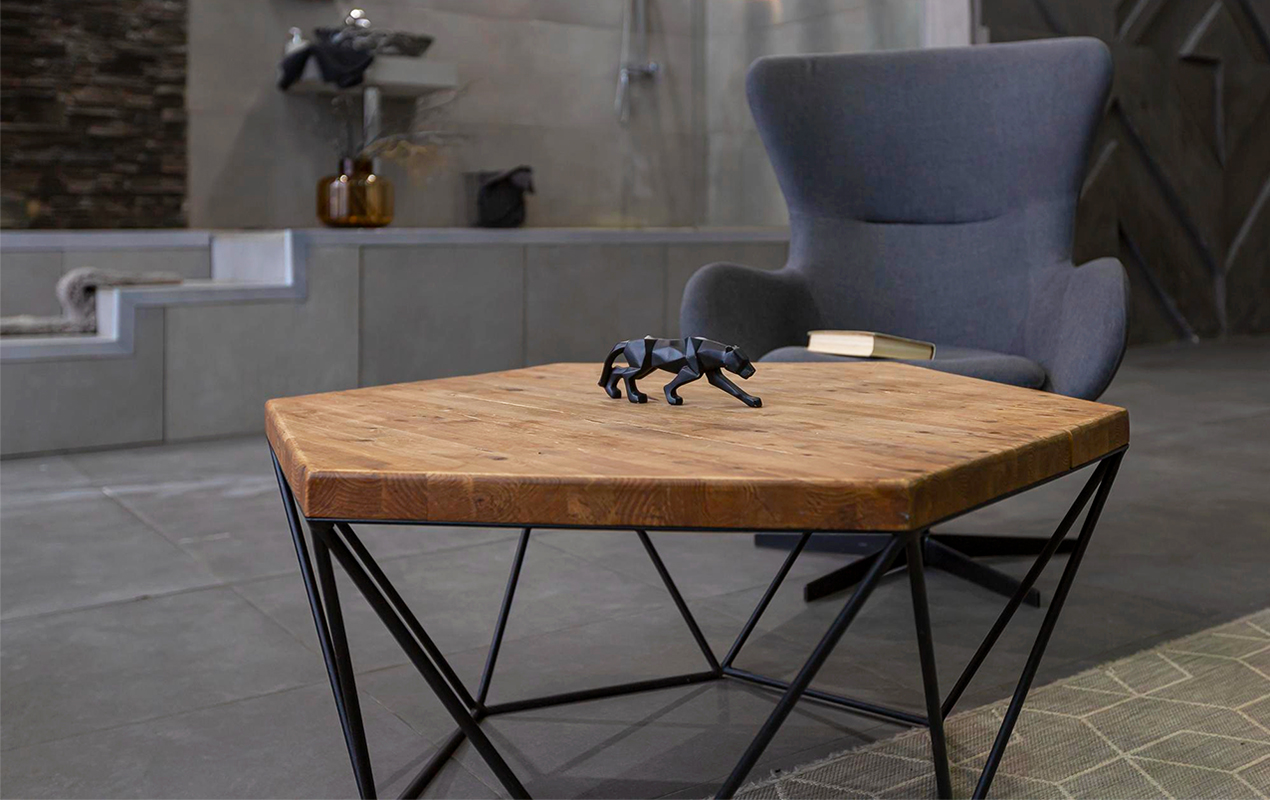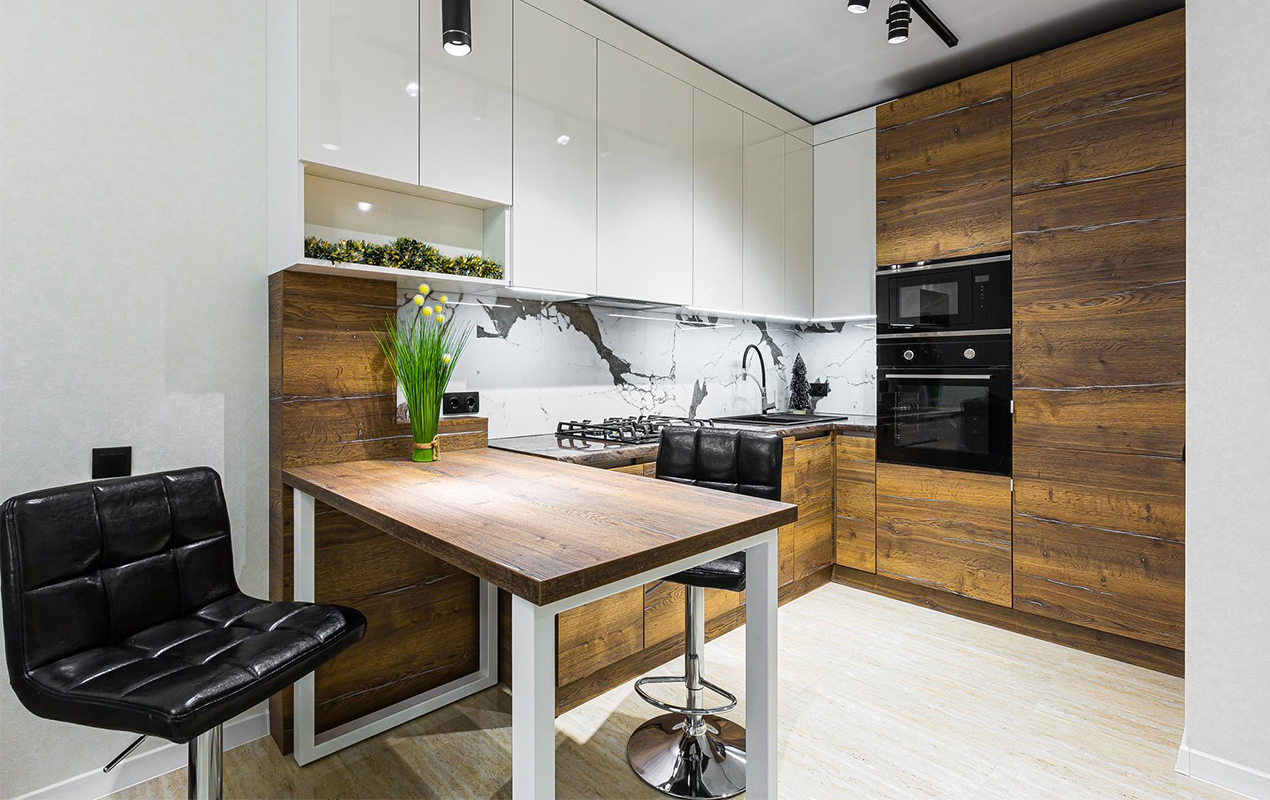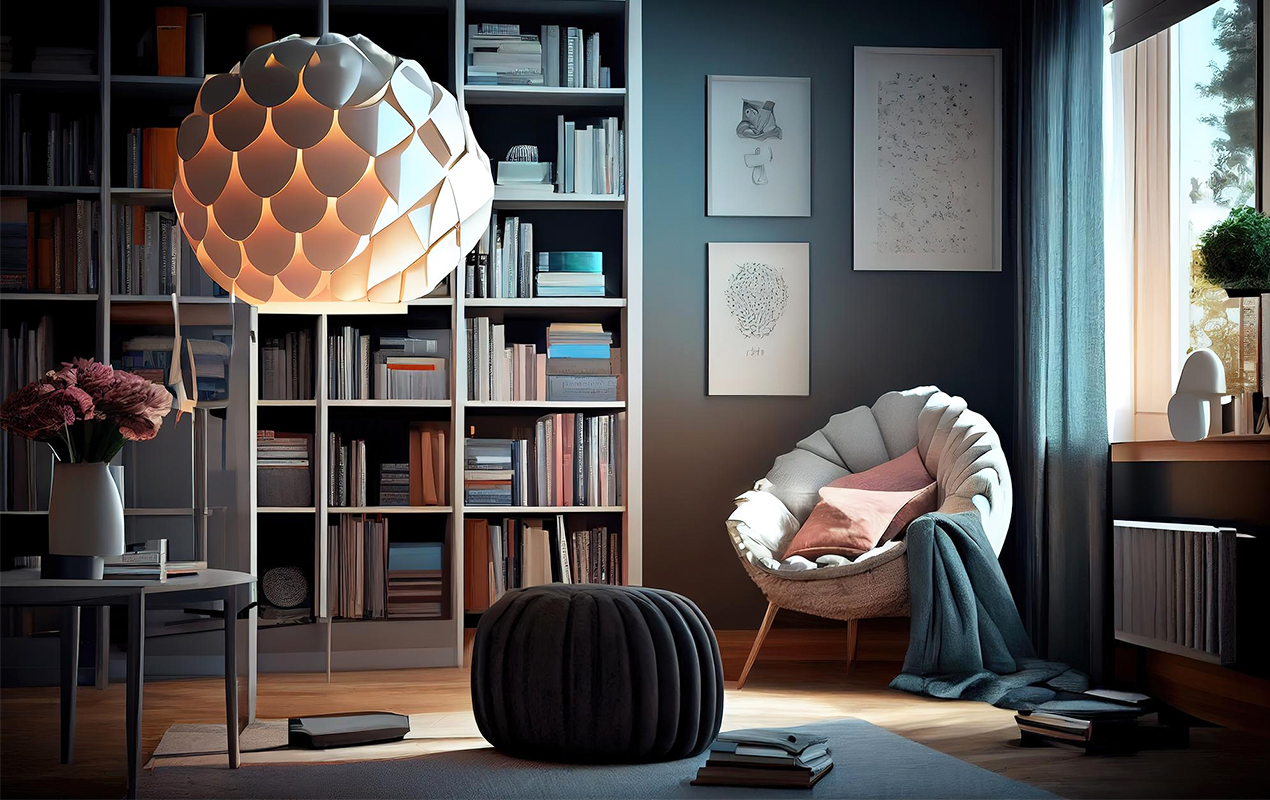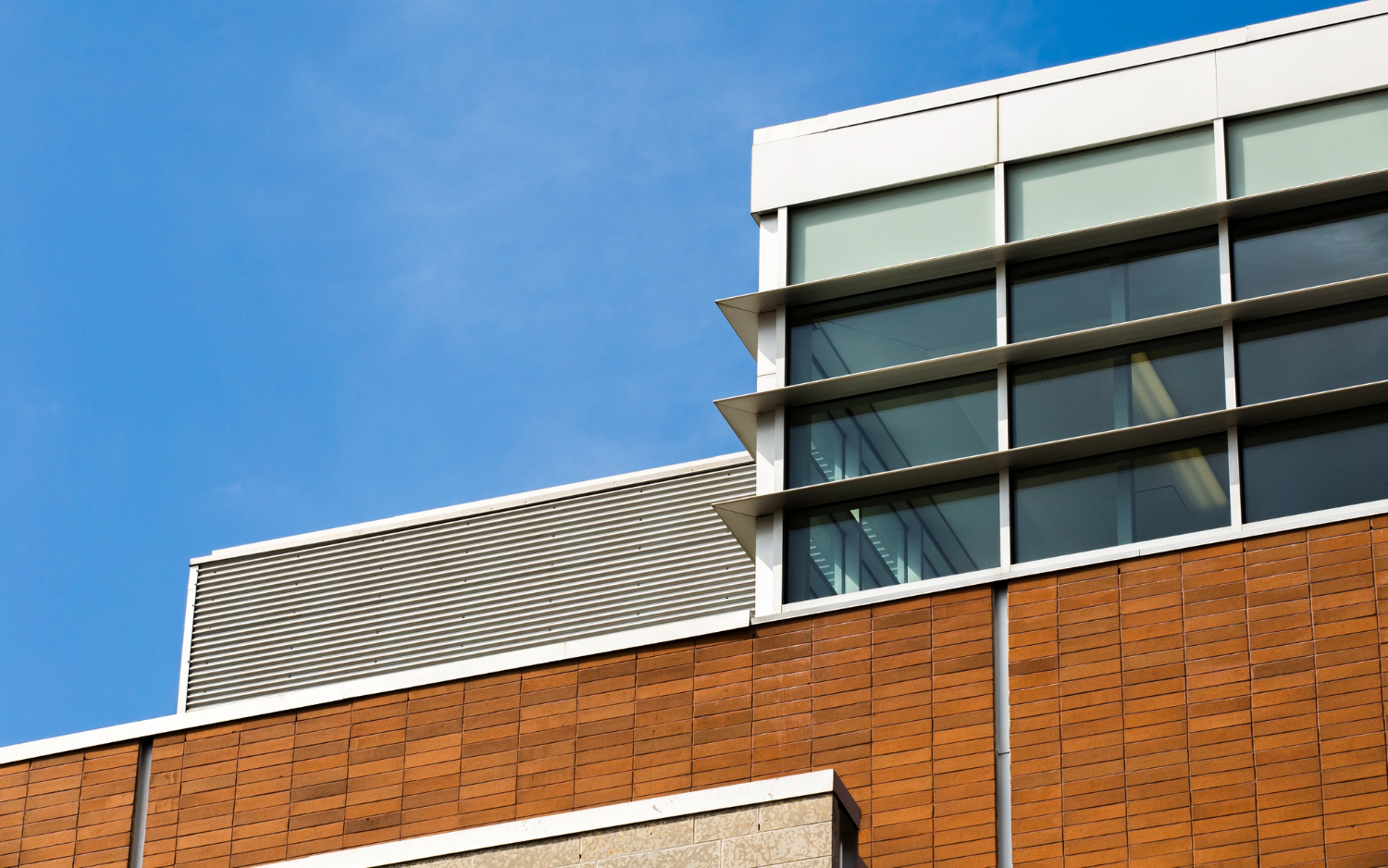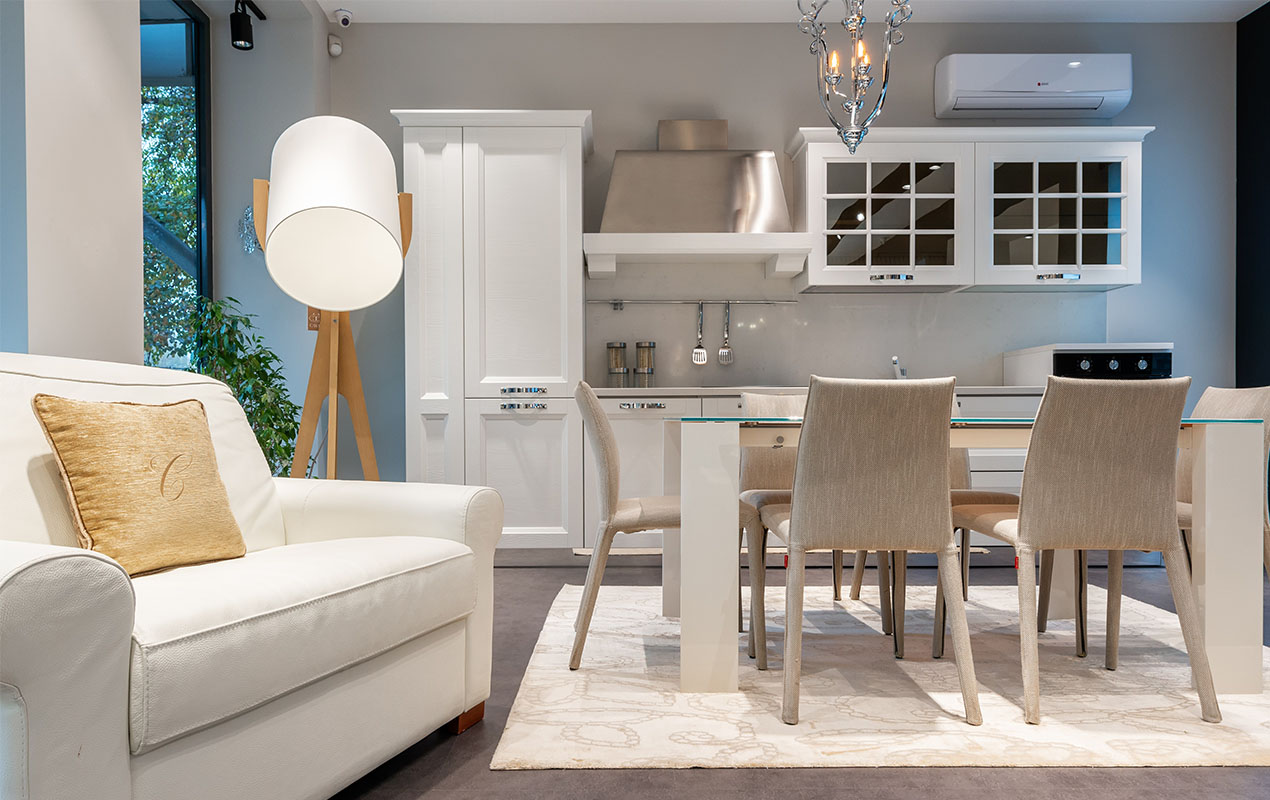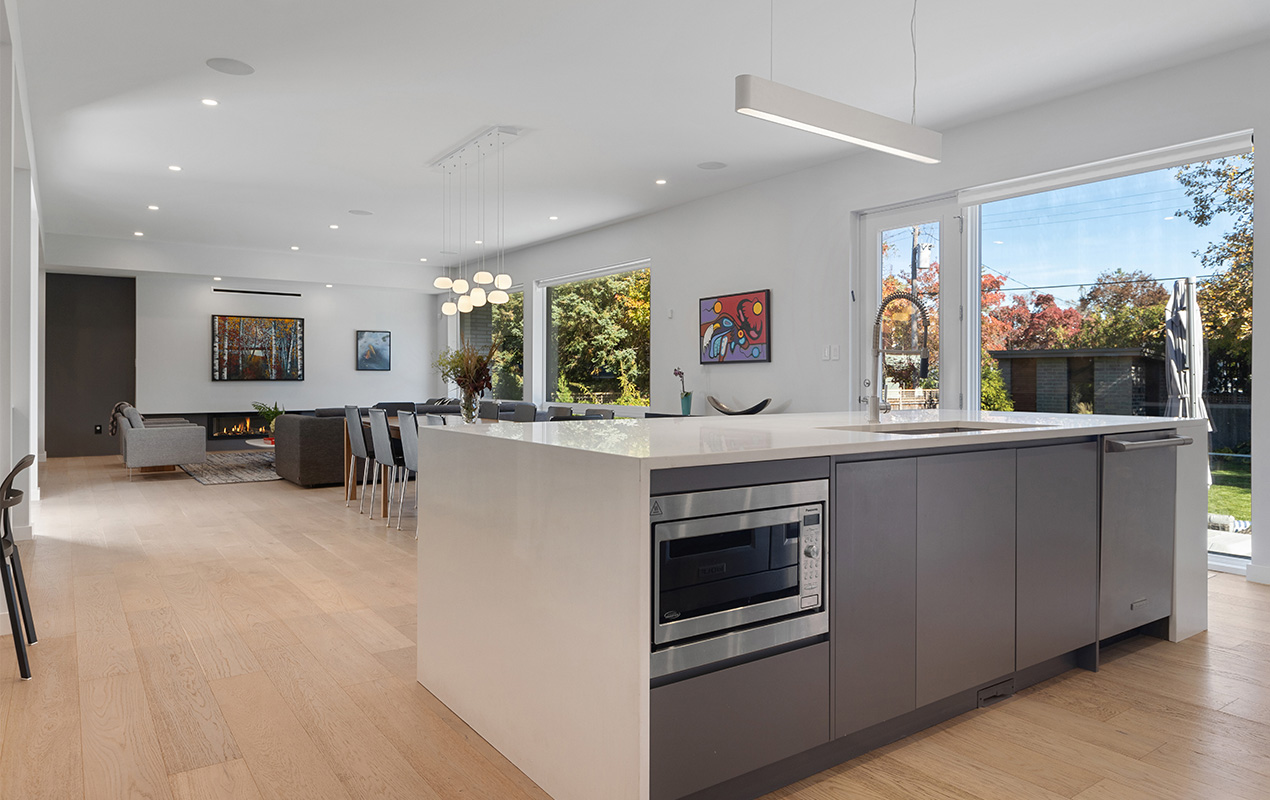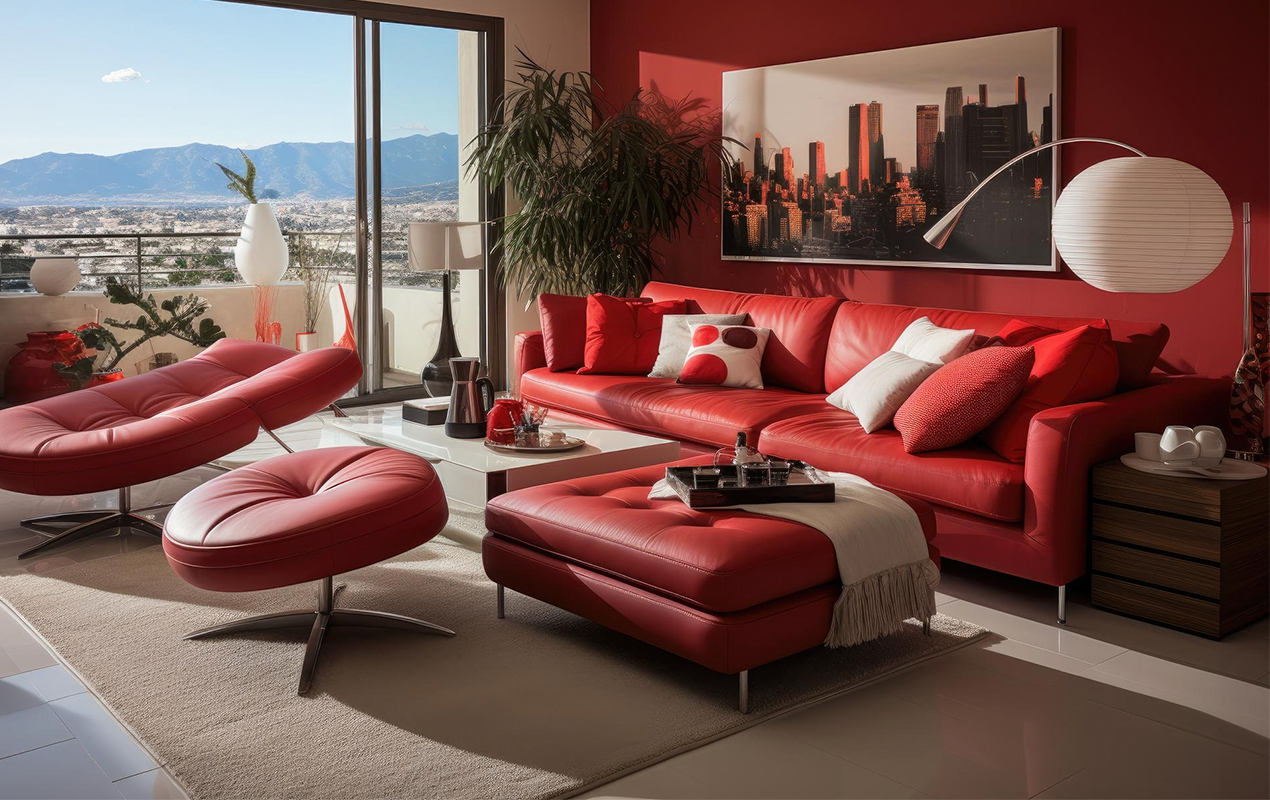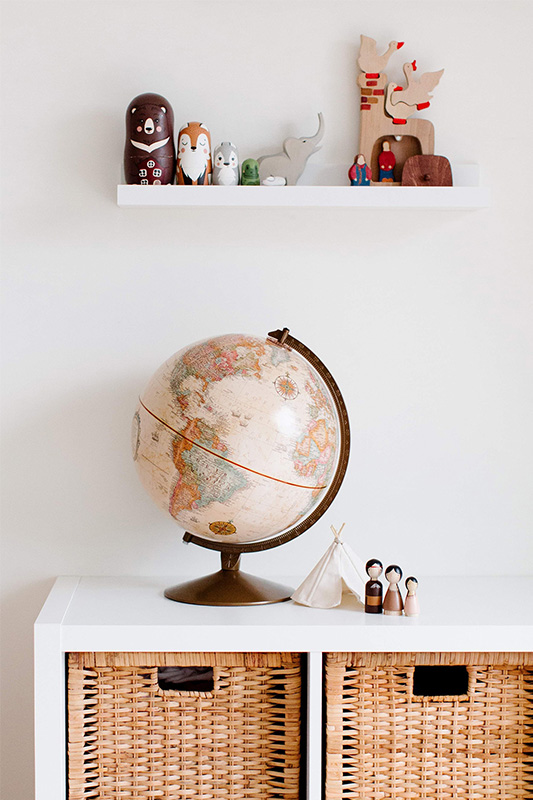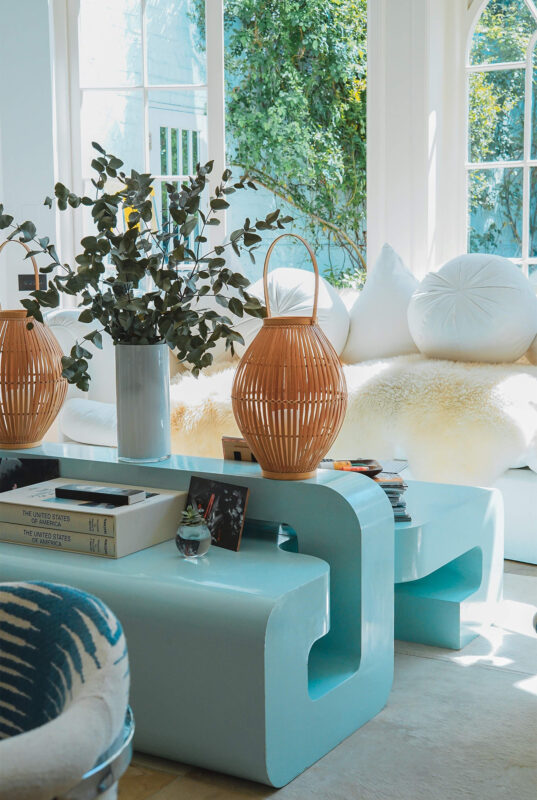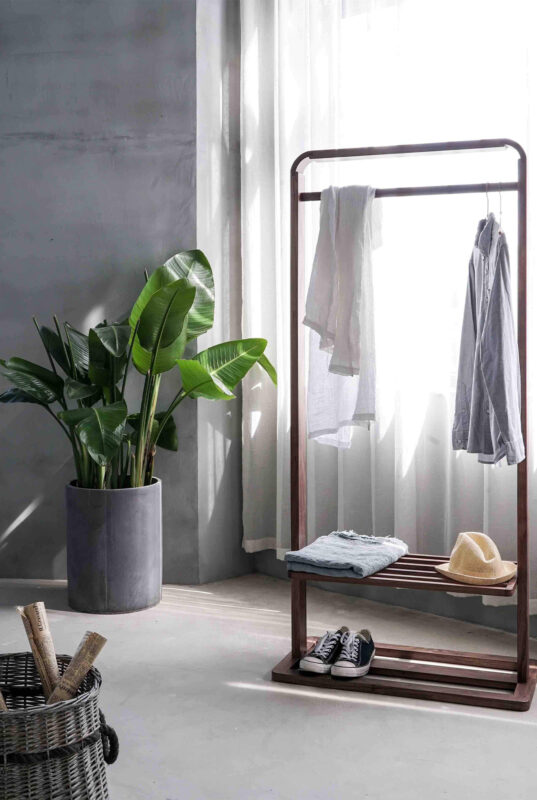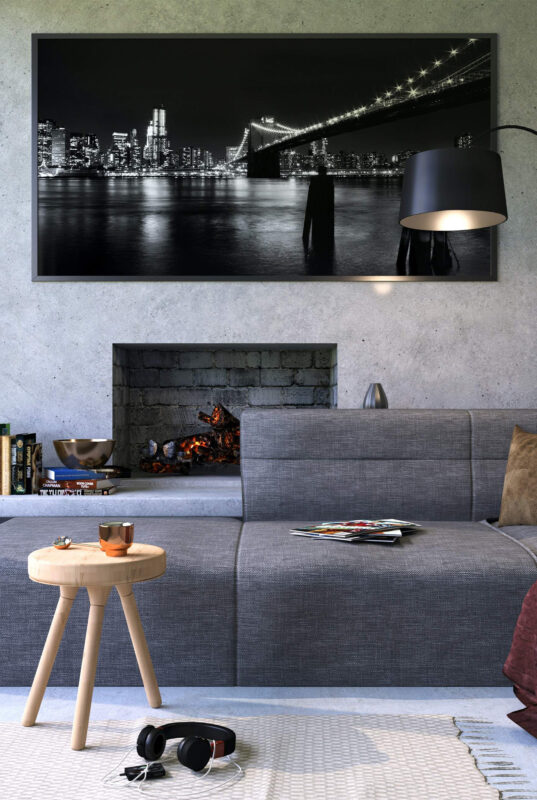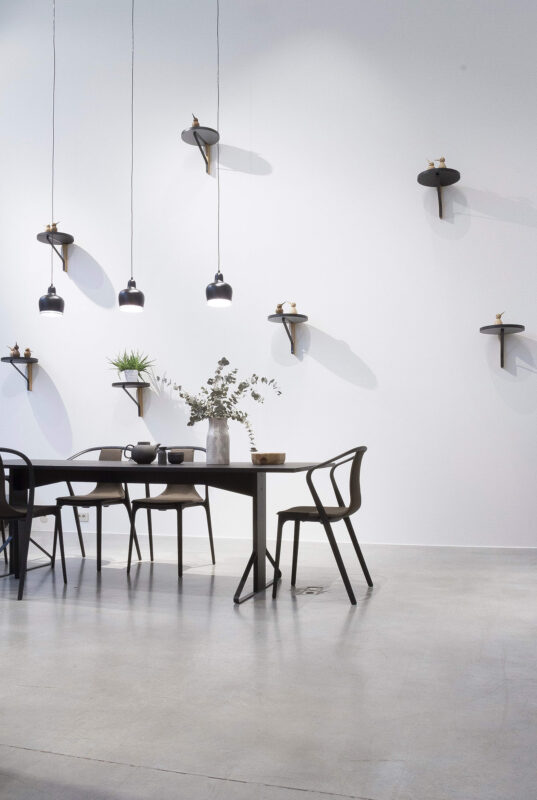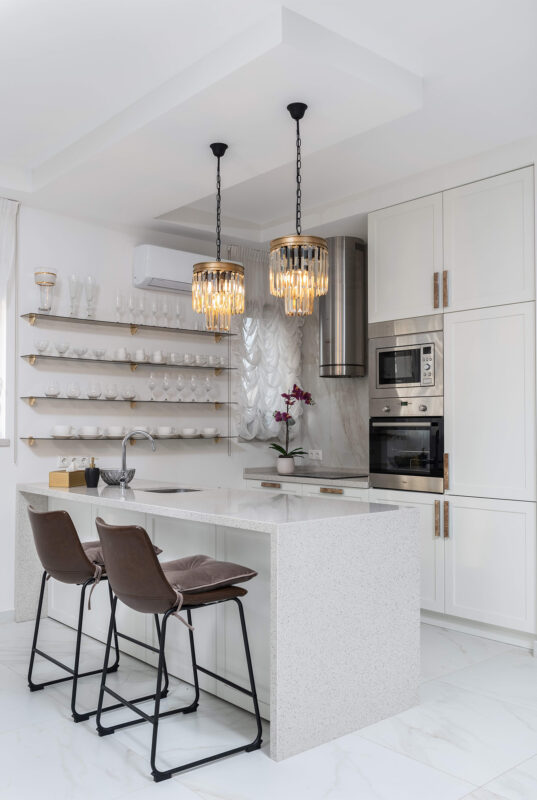Blog
Decorating With Wainscoting: 22 Ideas to Transfigure Yours Walls
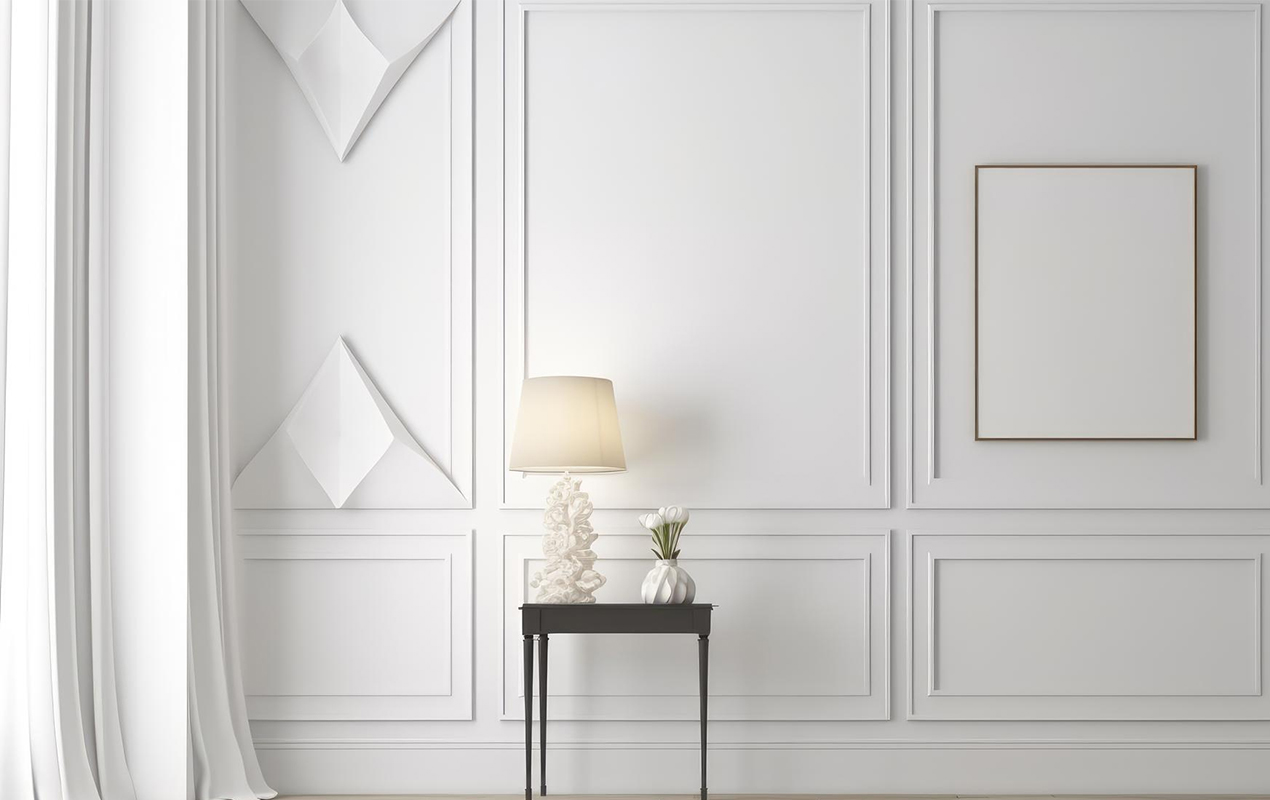
Wainscoting is a timeless interior design concept that adds charisma, elegance, and character to any space. It not only enhances the visual aesthetics of a room but also provides practical benefits, such as protecting walls from damage and adding insulation. With a broad spectrum of materials, styles, and finishes available, numerous wainscoting ideas can be adapted to fit a range of design requirements and complement various interior design themes.
Exploring different wainscoting ideas will open a world of creative prospects to revamp your space into a memorable and inviting environment.
1. Classic White Wainscoting
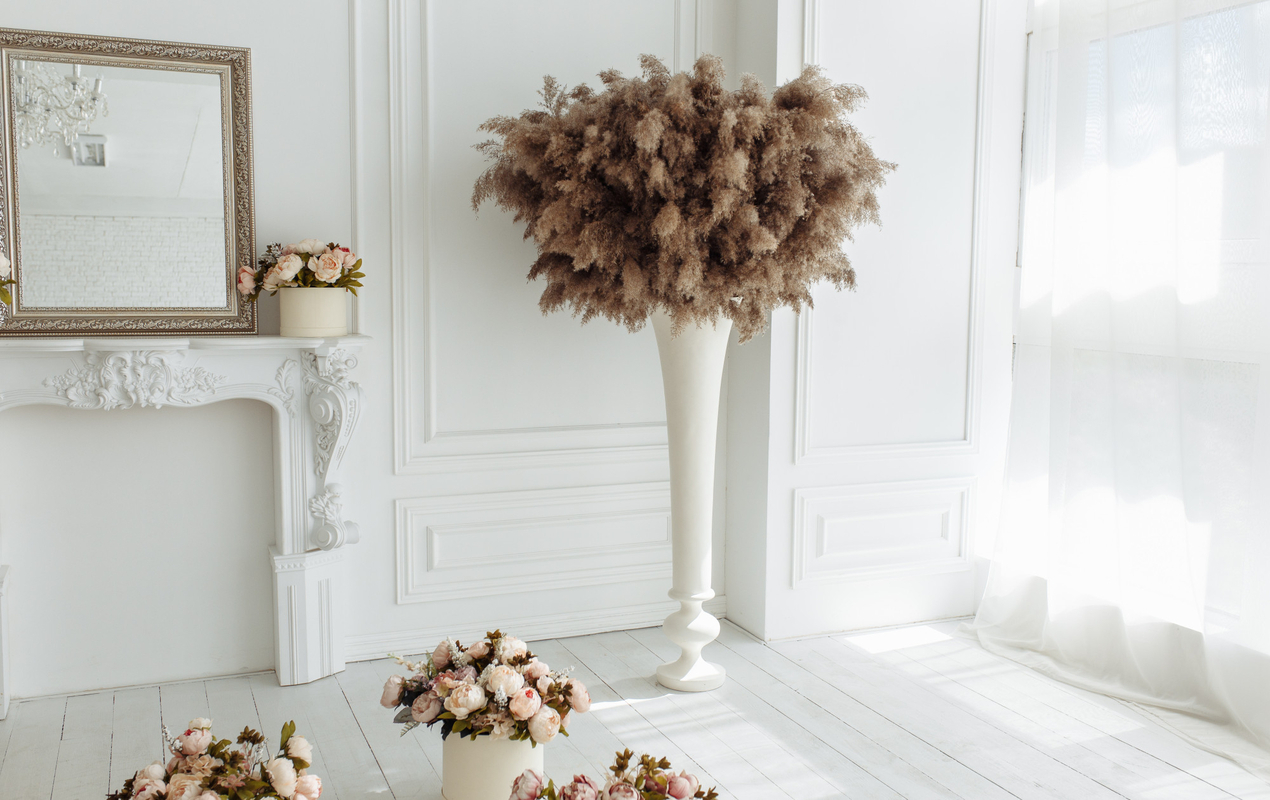
Photo by freepic.diller frtom Freepik
Wainscoting in traditional white emanates a timeless, graceful allure that enhances the room’s environment with its inborn sophistication. The Wainscoting in white gives it a clean, fresh feel, enhancing the room’s comprehensive aesthetic. The bright white color blends pleasingly with different designs and adds a sense of elegance to both traditional and modern settings. White Wainscoting creates a stunning interplay of light and shadow by giving depth and texture to the wall, capturing the eye with its architectural refinement.
2. Monochromatic
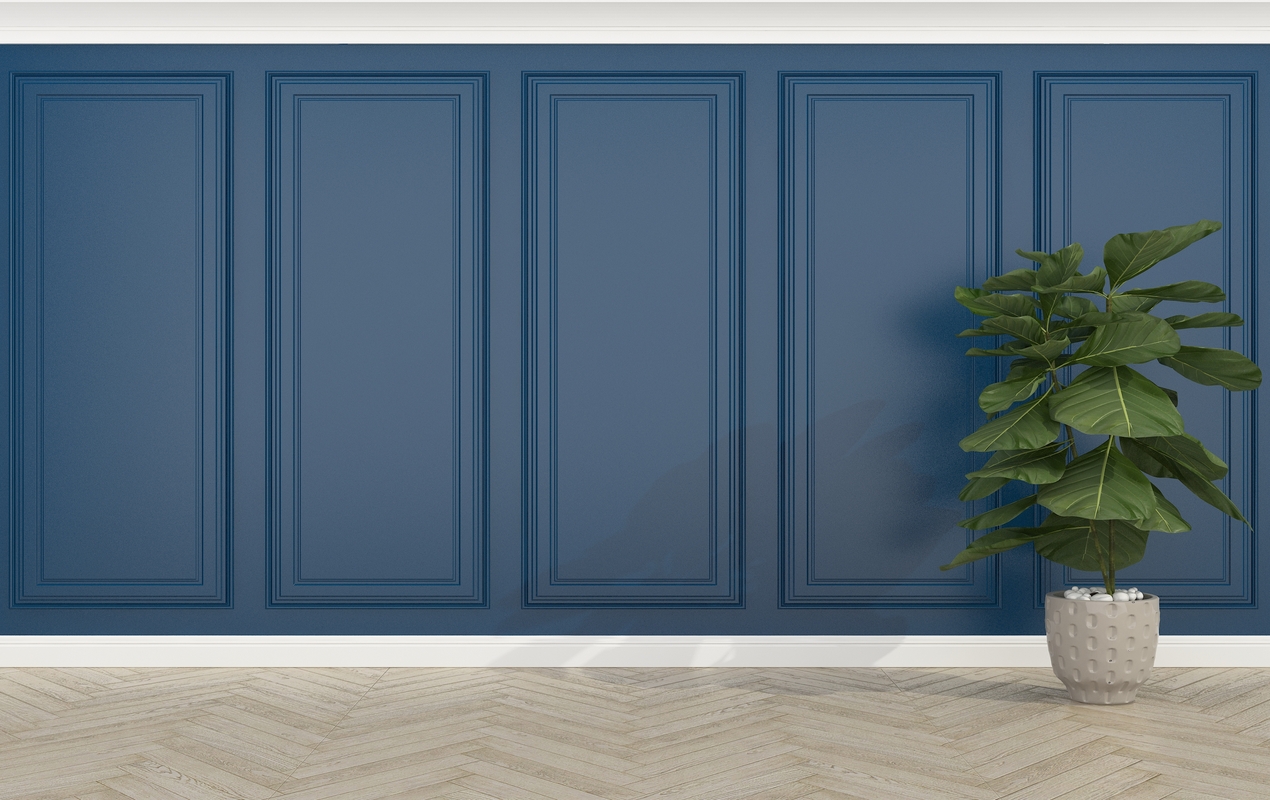
Photo by Minddandib from Freepik
The monochromatic design enables the Wainscoting to stand out while blending in with the surrounding decor, whether a robust dark shade or a traditional white. The area feels balanced and cohesive because of the invariant color palette, which highlights the room’s architectural features and gives it a professional appearance.
3. Flat Panel Wainscoting
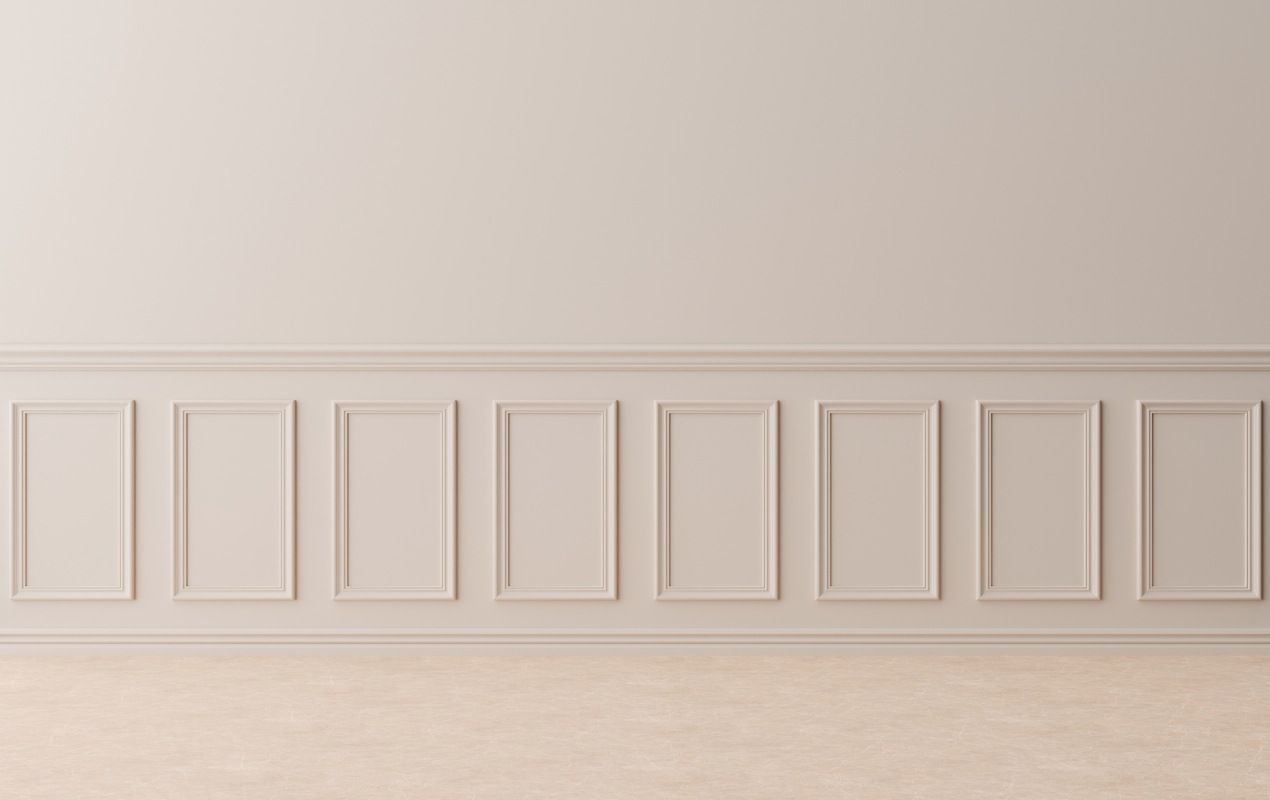
Photo by Creativebird from Freepik
Wall paneling, known as “flat panel wainscoting,” is made from square or rectangular panels positioned vertically along the bottom of a wall. Flat panel wainscoting has smooth, flat panels without any decorative accents, in contrast to standard raised panel wainscoting. This minimalist approach to the design produces a neat, contemporary style. Flat panel wainscoting offers budget and preference flexibility as it can be produced from a range of materials, including wood, MDF, and even PVC. It protects and strengthens the wall while giving it a captivating appearance.
4. Dimensional Wainscoting
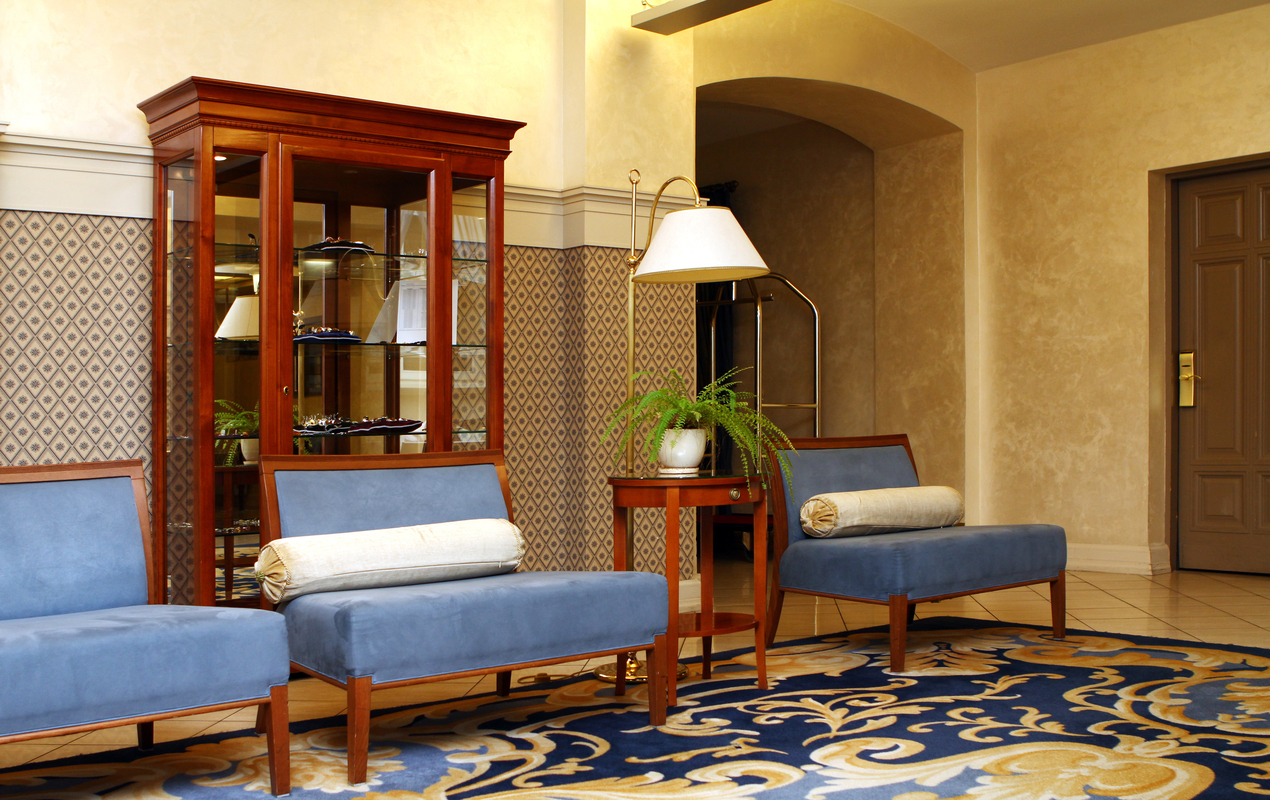
Photo by Racool_studio from Freepik
A compelling design method, dimensional Wainscoting adds three-dimensional features that add visual intrigue and architectural character while eschewing conventional flat panels. Dimensional Wainscoting turns plain walls into exquisite works of art by adding raised patterns, elaborate carvings, or embossed decorations.
5. Wooden Wainscoting
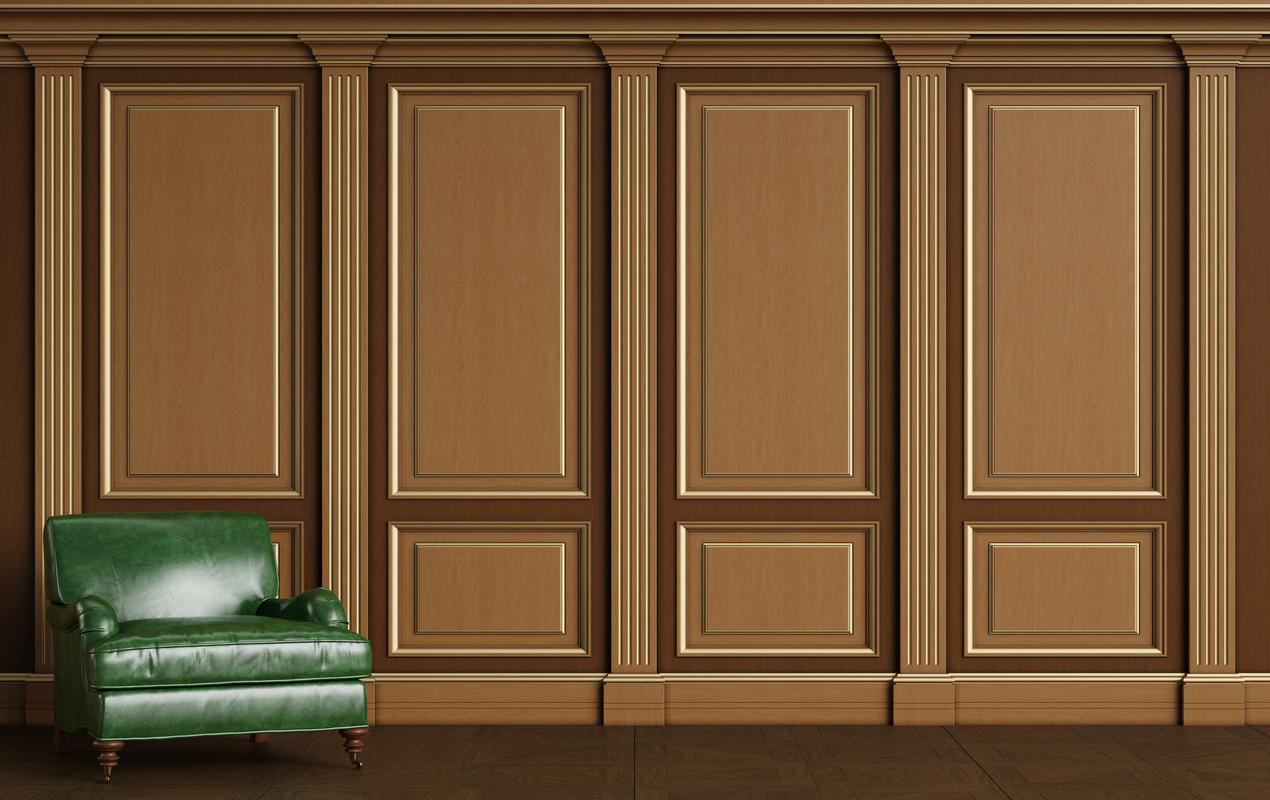
Photo by remuhin from Freepik
Wooden Wainscoting comprises wooden paneling that fills the lower part of interior walls and often rises halfway up the wall or to chair rail height. The panels can be specially made to fit numerous design styles, from traditional to modern, and are expertly fashioned from several wood types, like oak, pine, or mahogany. Wood Wainscoting is a key design element that delivers practical advantages, including insulation and wear protection for walls.
6. Beadboard Wainscoting
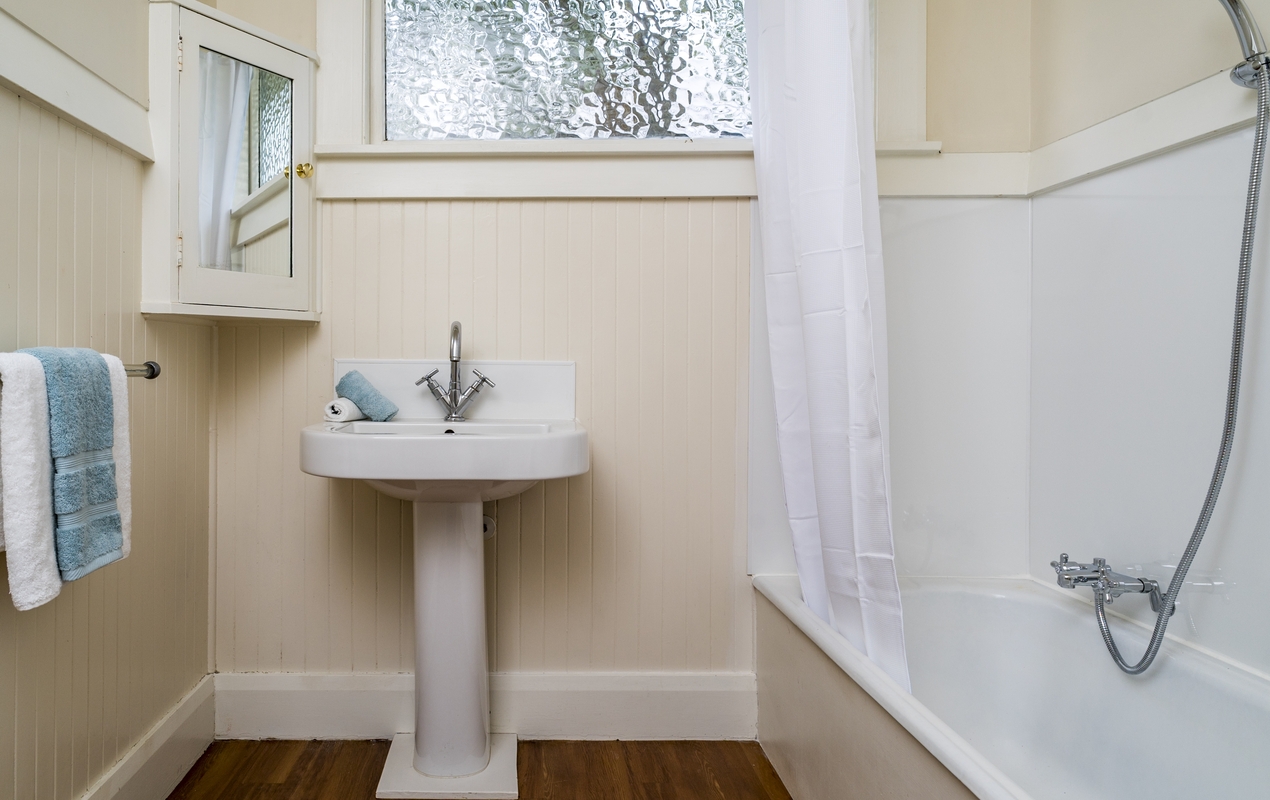
Photo by wirestock from Freepik
Beadboard wainscoting is a timeless architectural detail that gives interior areas pizzazz and character. Made from vertical, slender boards or panels with characteristic grooves known as beads spanning their length. It has both practical and ornamental uses. Functionally, it protects against dents, scuffs, and grime that could develop from everyday wear and tear. It adds a touch of classic craftsmanship and timeless refinement to any space’s aesthetics.
7. Embossed Metal
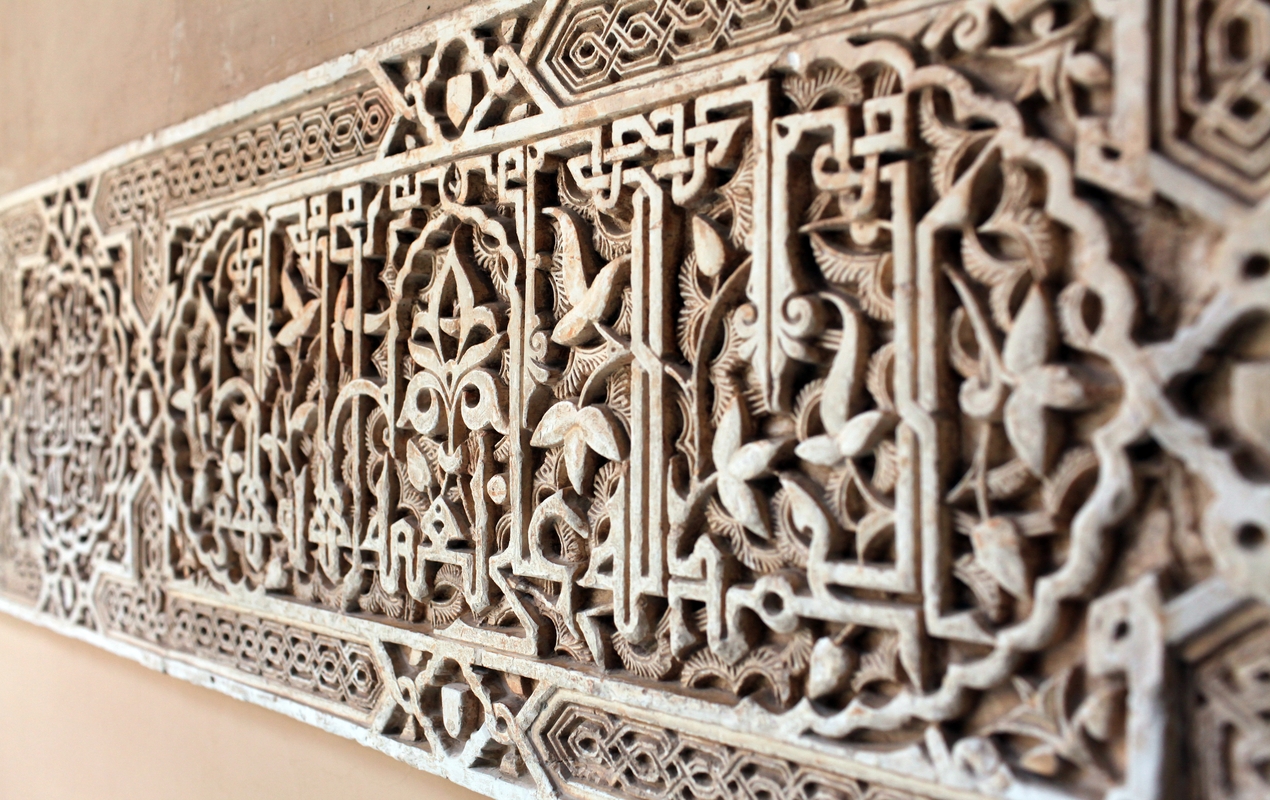
Photo by wirestock from Freepik
This decorative option is crafted from premium metal sheets, carefully embossed with intricate patterns and textures. The embossing process creates raised designs on the surface of the metal, adding depth to the panels. Metal wainscoting can be made from various metals, including brass, copper, and stainless steel, each offering its own individuality. Its properties can also reflect light, brightening up the space, and creating a sense of openness and grandeur.
8. Overlay Panel
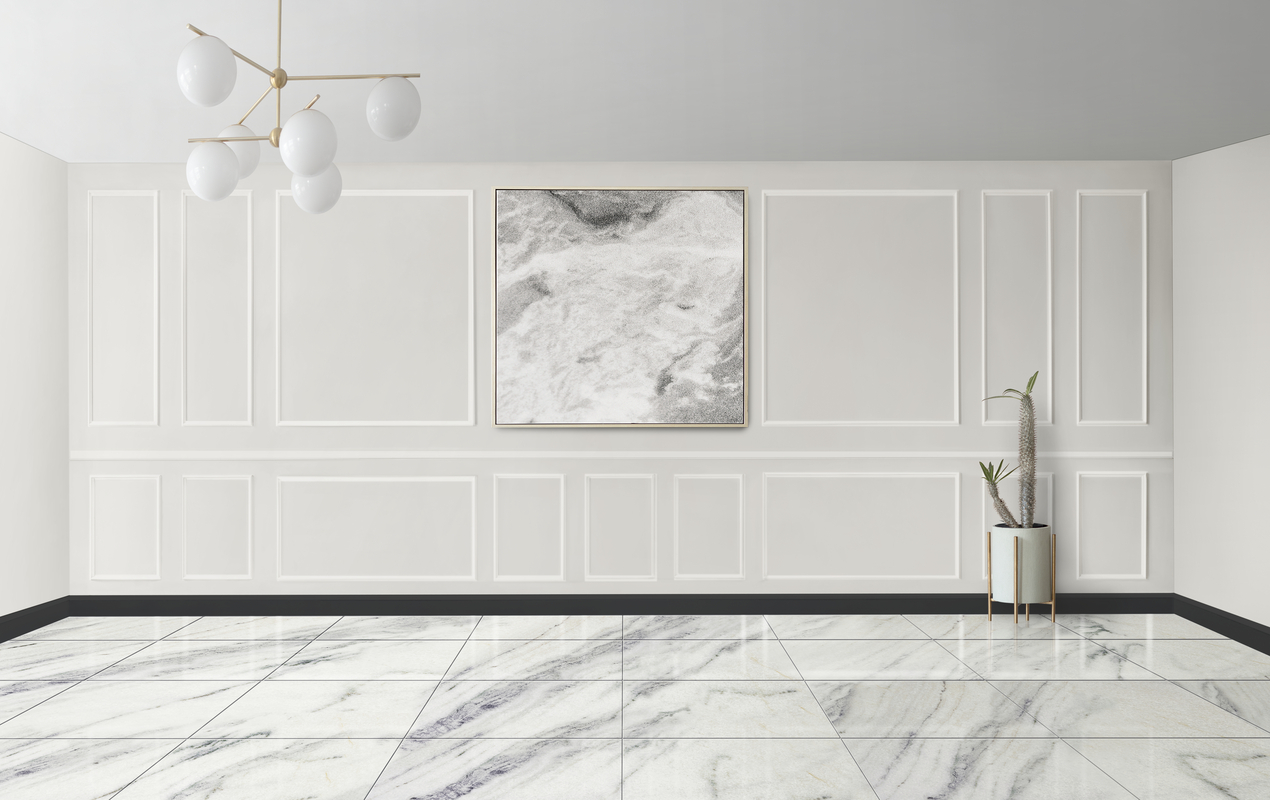
Photo by rawpixel.com from Freepik
Wainscoting panel overlay applies flat or raised panels to the wall’s lower half, usually taking up one to two-thirds of the wall’s height. Panels are placed on top of the existing drywall or plaster, providing a layered effect. As for the style and expense, this example offers flexibility by being built from different materials, including wood, MDF (medium-density fiberboard), or PVC (polyvinyl chloride).
9. Beadboard and Flat Panel Combo
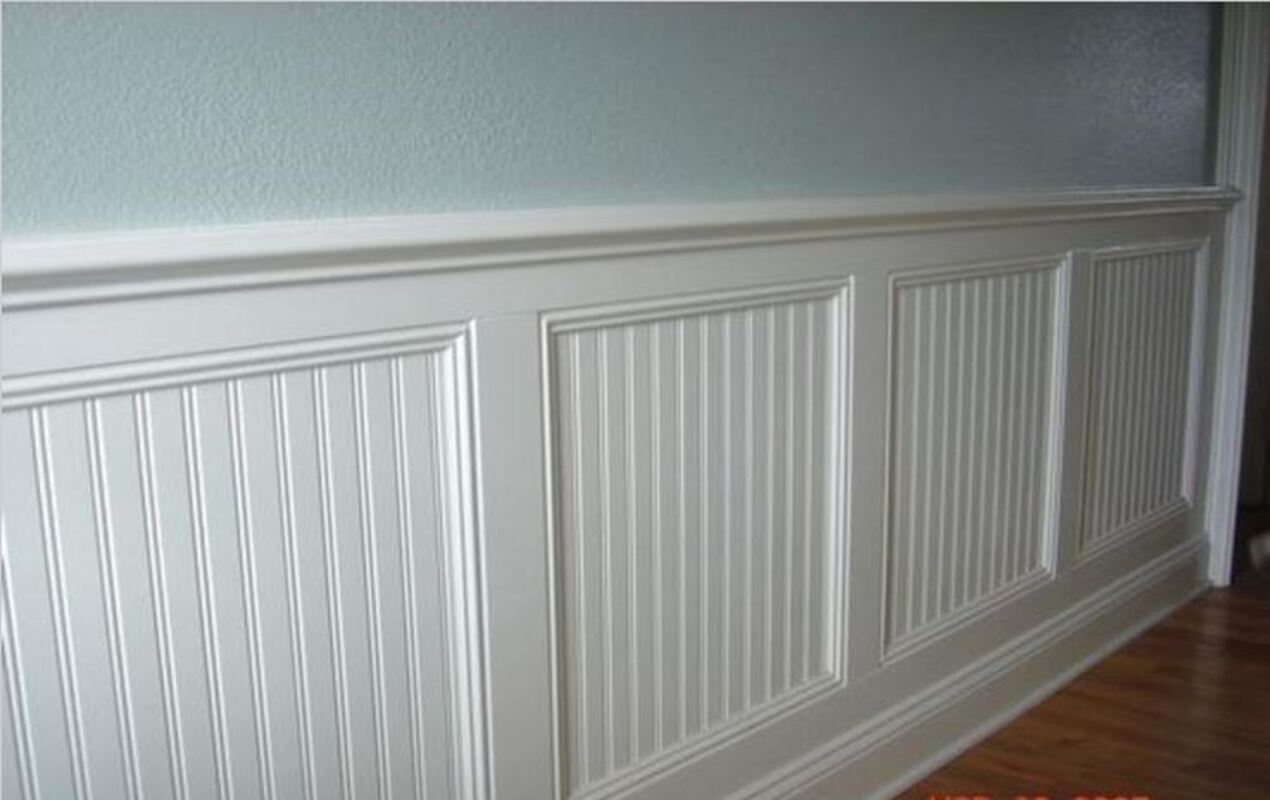
Photo by Pinterest
This distinctive wainscoting design furnishes a seamless appearance by fusing the classic allure of beadboards with the svelte sophistication of flat panels. Beadboards are used to embellish the lower half of the wall. It has uniformly spaced vertical grooves showing traditional craftsmanship. Flat panels are placed on the beadboard, providing a polished, smooth surface that contrasts with the detailed pattern below.
10. Ceramic Tile Wainscoting
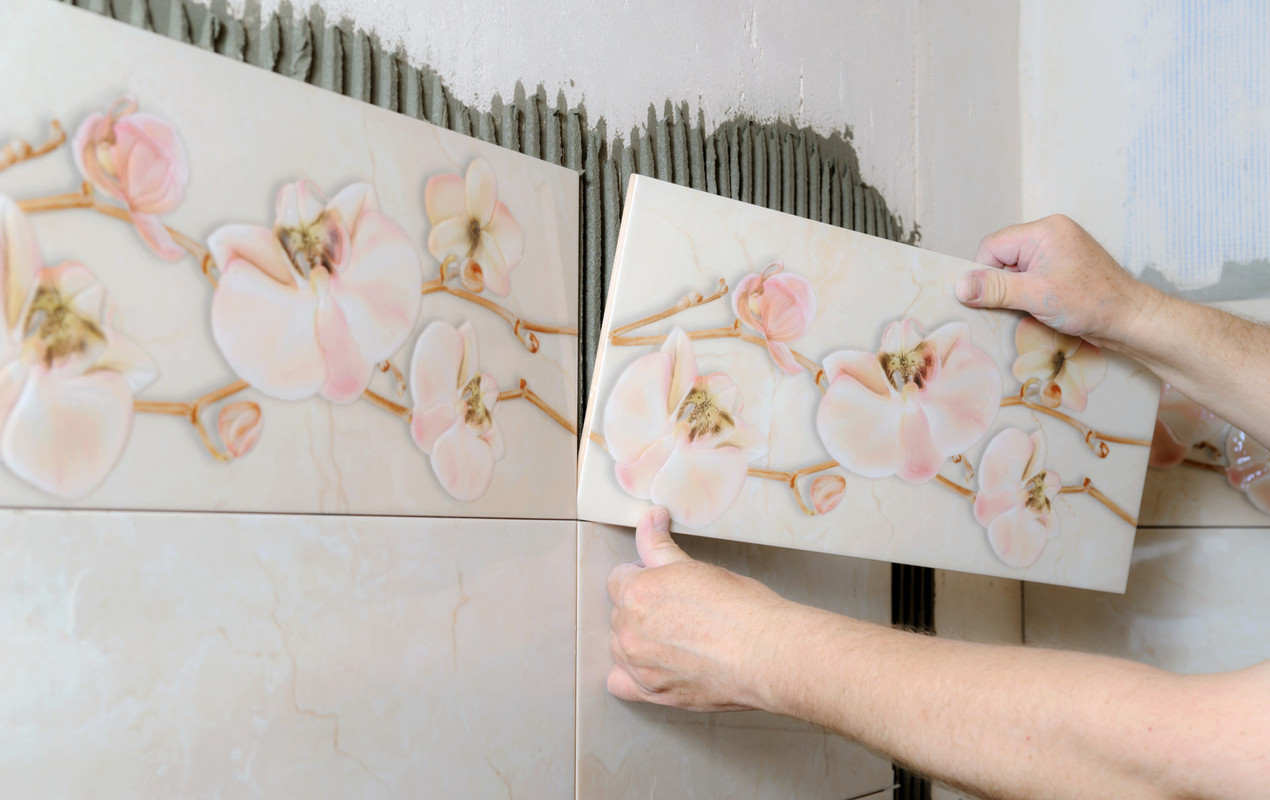
Photo by volodymyr_vorona from Freepik
Ceramic wainscoting is a lovely option for adding a touch of class to your space. It’s often constructed from ceramic tiles because of their toughness, adaptability, and aesthetic appeal. They offer countless design options due to their varying patterns and textures. Ceramic wainscoting can be tailored to your preferences, whether you opt for a classic, conventional theme or a more modern style.
11. Contrast Wainscoting
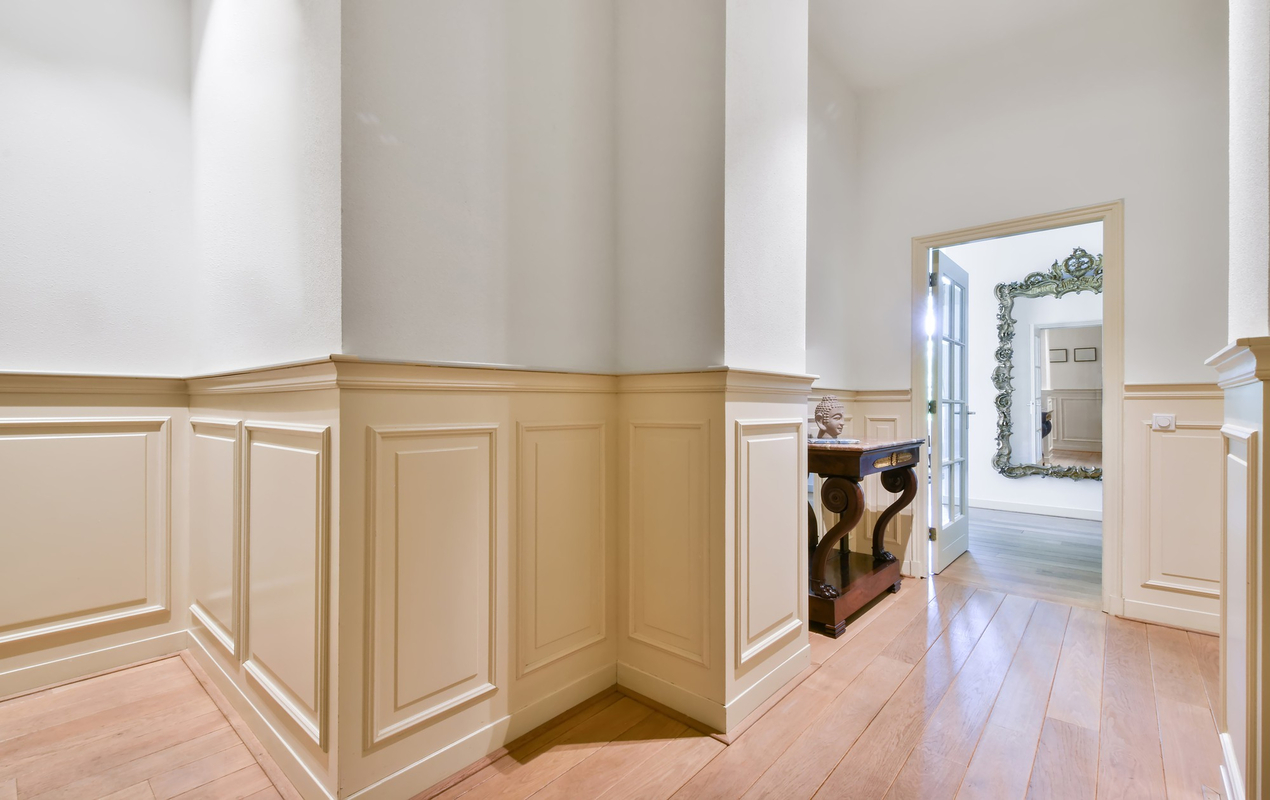
Photo by user24121185 from Freepik
Contrast wainscoting is distinguished by using contrasting hues or materials to produce an opposing visual effect. Contrasting furnishes a dynamic interplay between the upper and lower areas of the wall, blending two distinct hues or textures, such as dark and light wood or painted and natural finishes. This concept highlights the architectural details and creates a sense of equilibrium in a room while also bringing refinement.
12. Subtle Shiplap Paneling
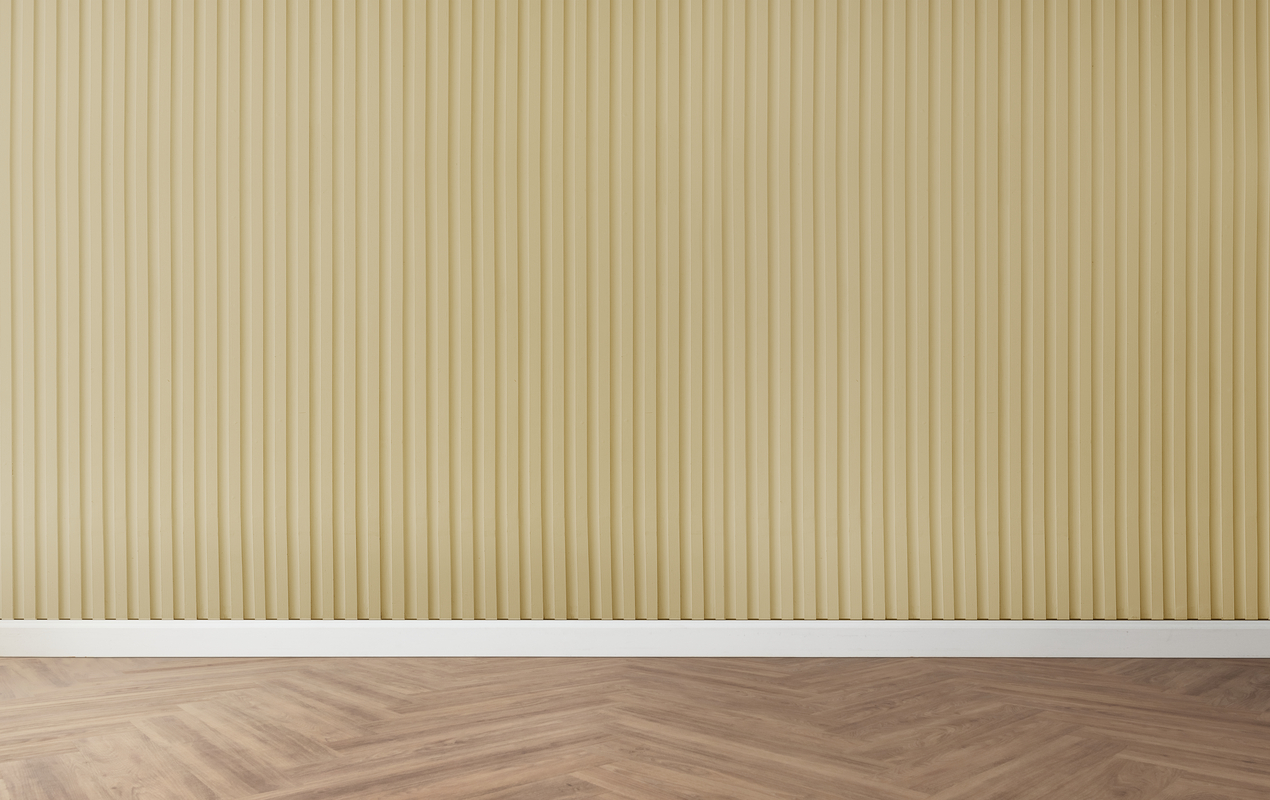
Photo by rawpixel.com from Freepik
This design uses thin wooden boards horizontally positioned with a small gap between them to produce a contemporary, classic texture. Shiplap paneling’s subtle appearance enables it to meld easily with various designs, including coastal, farmhouse, contemporary, and Scandinavian. Its simple lines and delicate shadows give the walls depth.
13. Framed Wainscoting
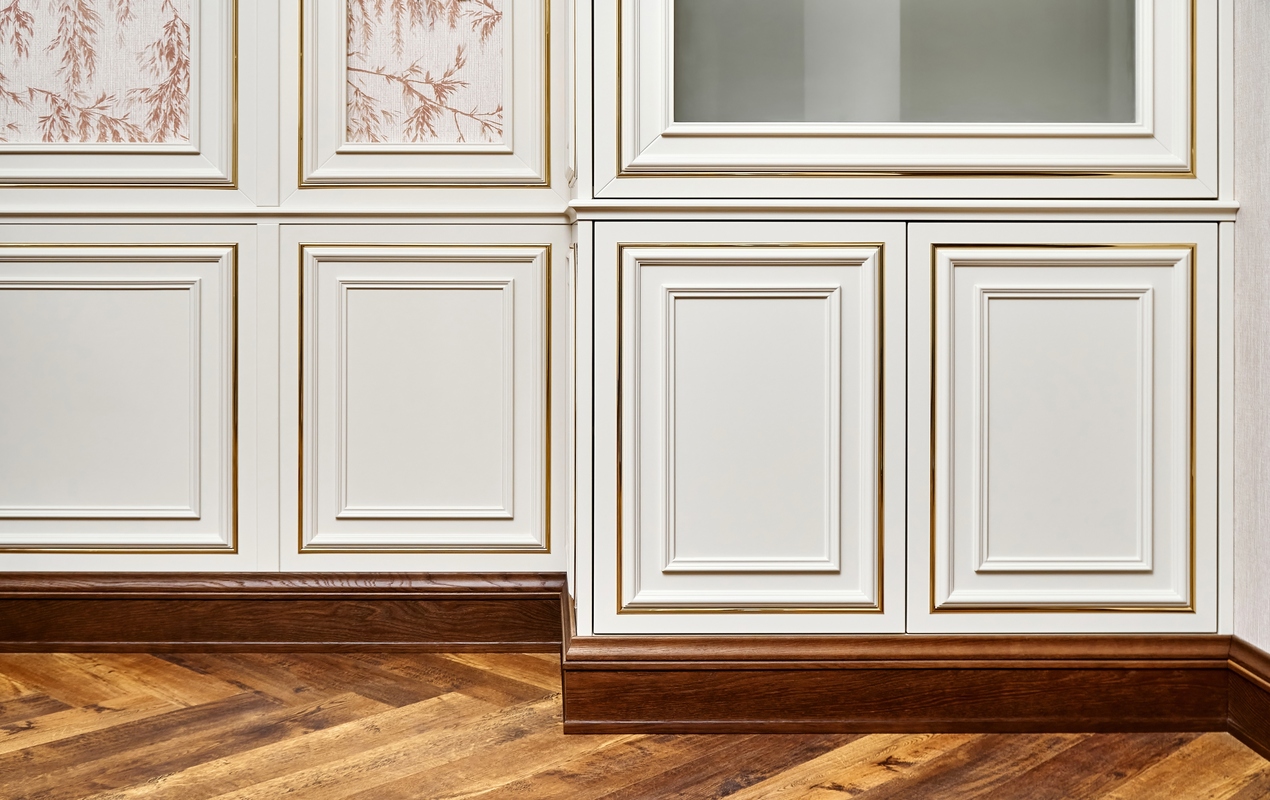
Photo by timltv from Freepik
A collection of wooden frames, often made from oak or maple, sit on the lower part of the walls forming framed wainscoting. The frames rest equally spaced, featuring elaborate moldings and artistic embellishments, giving the impression of depth and texture. To further highlight the framed panels, the upper section of the wall is commonly painted in a complementary color or covered with wallpaper.
14. Raised Panel Wainscoting
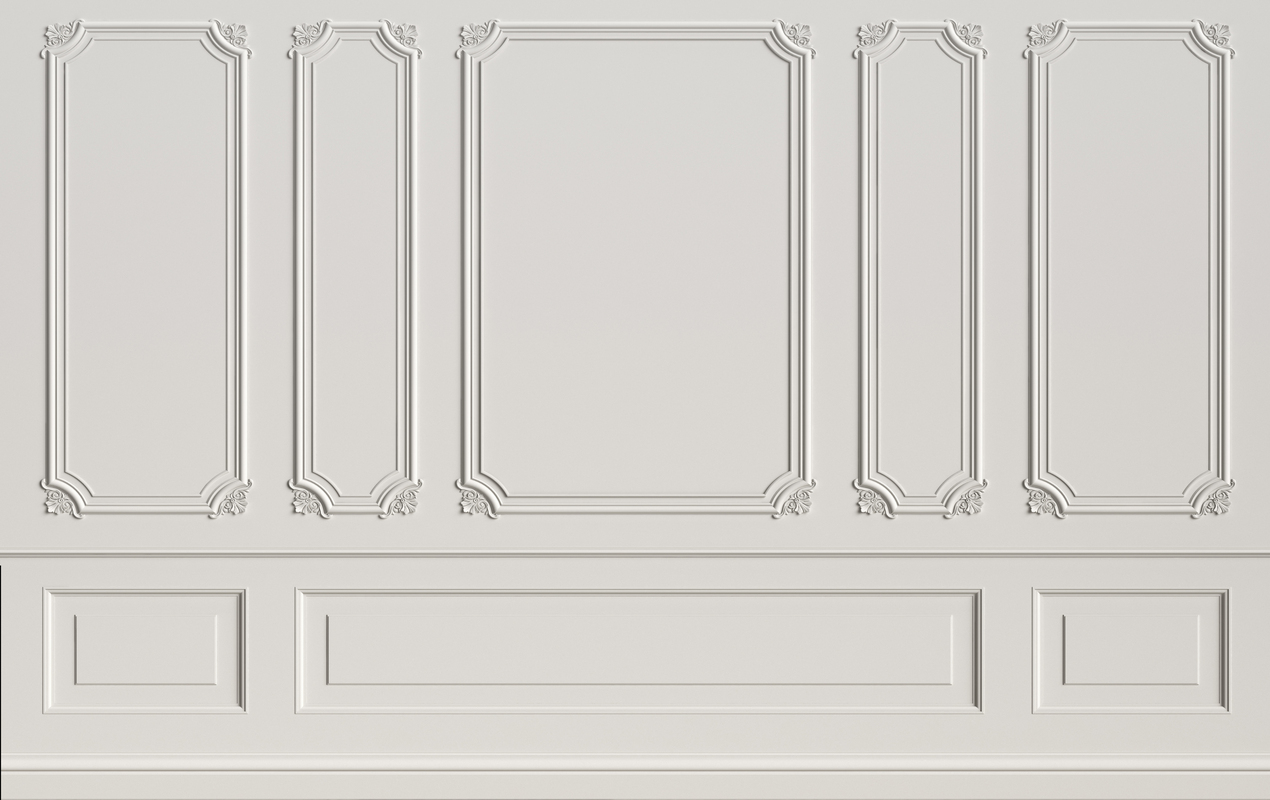
Photo by remuhin from Freepik
Wainscoting with raised panels is a traditional style. This concept uses raised rectangular or square panels framed with rails and stiles. Since ancient times, this method has been used to improve the beauty of homes, and too in conventional and formal settings.
15. Board and Batten Wainscoting
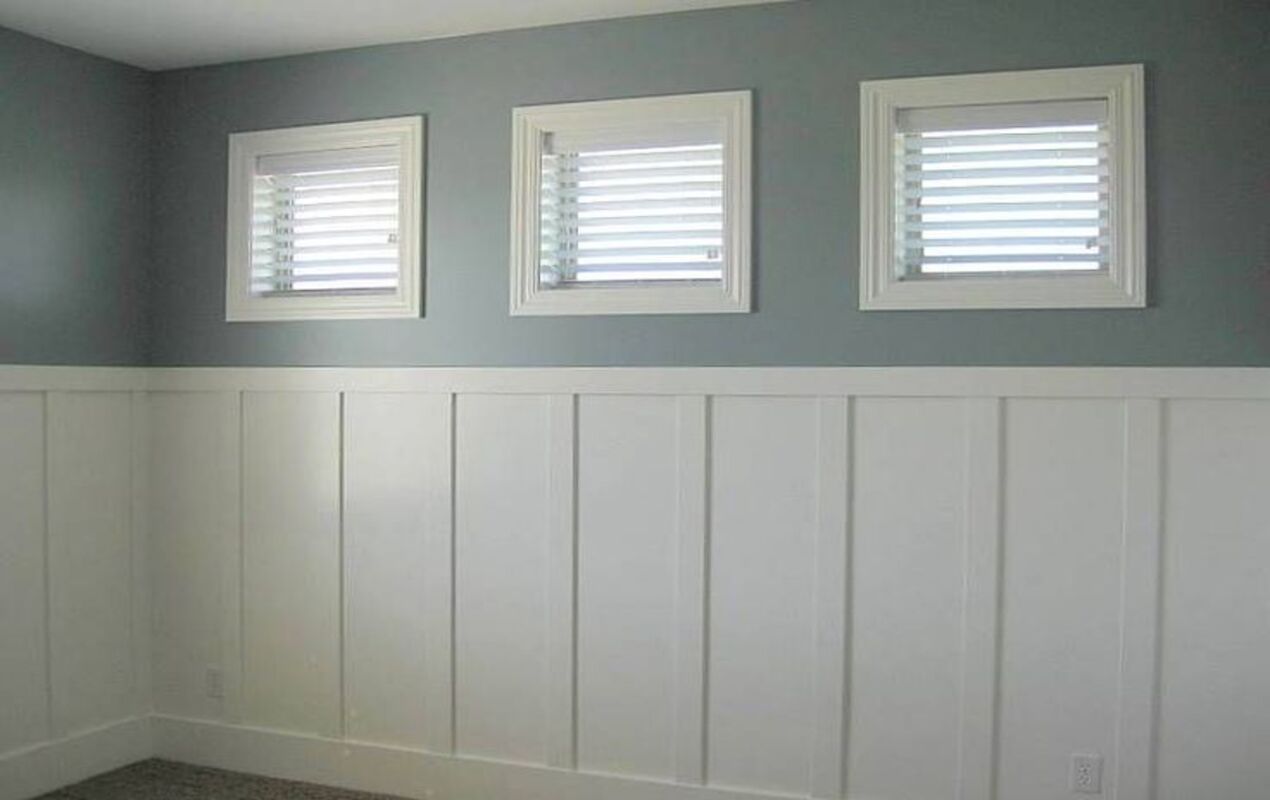
Photo by Pinterest
To fuse this style of Wainscoting, wide vertical boards are introduced. They rest spaced equally apart, fastened to the lower half of a wall. To complete the structures, thin, narrow batten strips are affixed over the joints between the boards, creating a distinctive pattern.
16. Faux Painted
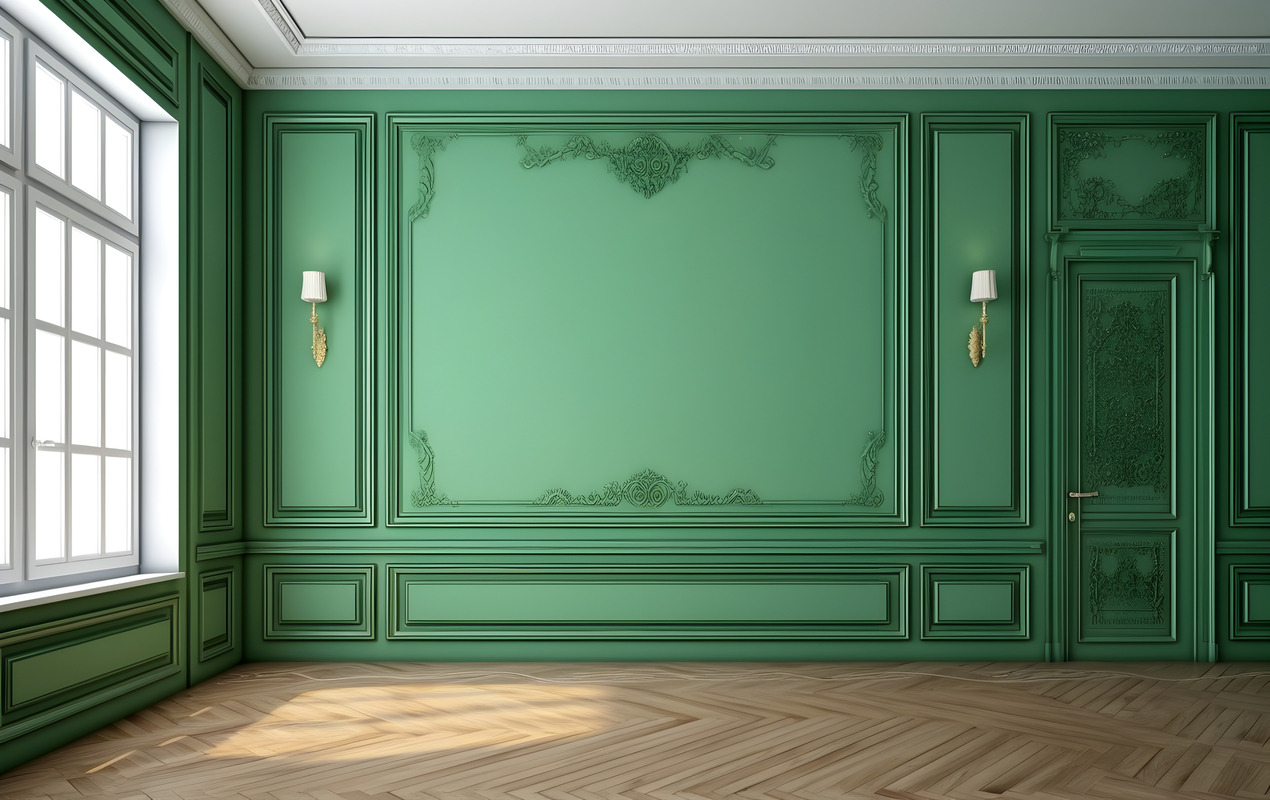
Photo by LetsRock from Freepik
A spectacular and reasonably priced approach is faux-painted Wainscoting. Faux painting is the artistic process of imitating the appearance of a different material or texture. Wainscoting and faux paint work together to create a charismatic wall that, for a fraction of the price, imitates the appearance of pricey stone or woodwork. Rich wood grain textures, marble or granite accents, and a long list of additional design possibilities are attainable with faux-paint options.
17. Lattice Wainscoting
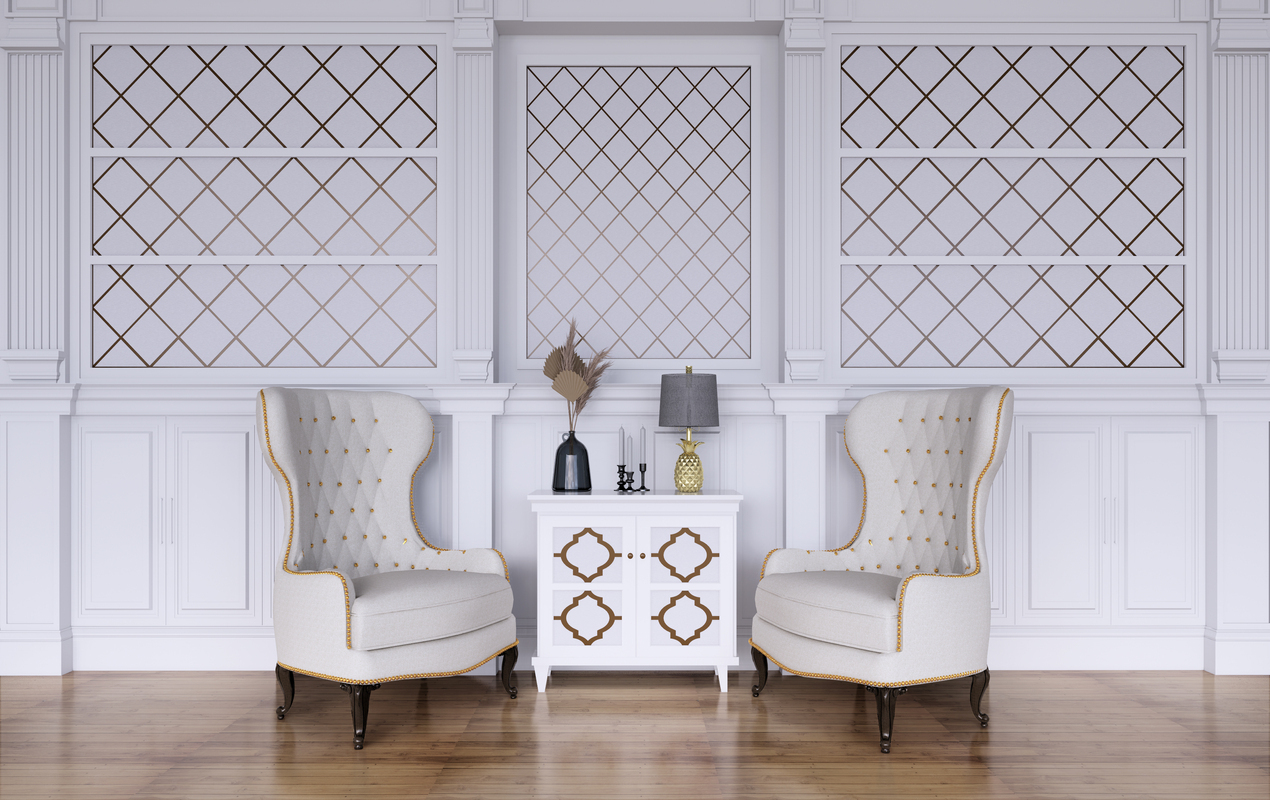
Photo by puturiki39 from Freepik
Every interior space is given an irresistible charm and refinement by lattice wainscoting, which creates a fantastic tapestry of timelessly elegant design. It comprises several hardwood strips that connect to a pattern of tiny geometric forms. Lattice readily adds architectural intrigue to a room by carefully arranging the lattice, taking the appearance to new heights. This creative option has been very popular with homeowners looking to step outside their comfort zones.
18. Tongue and Groove
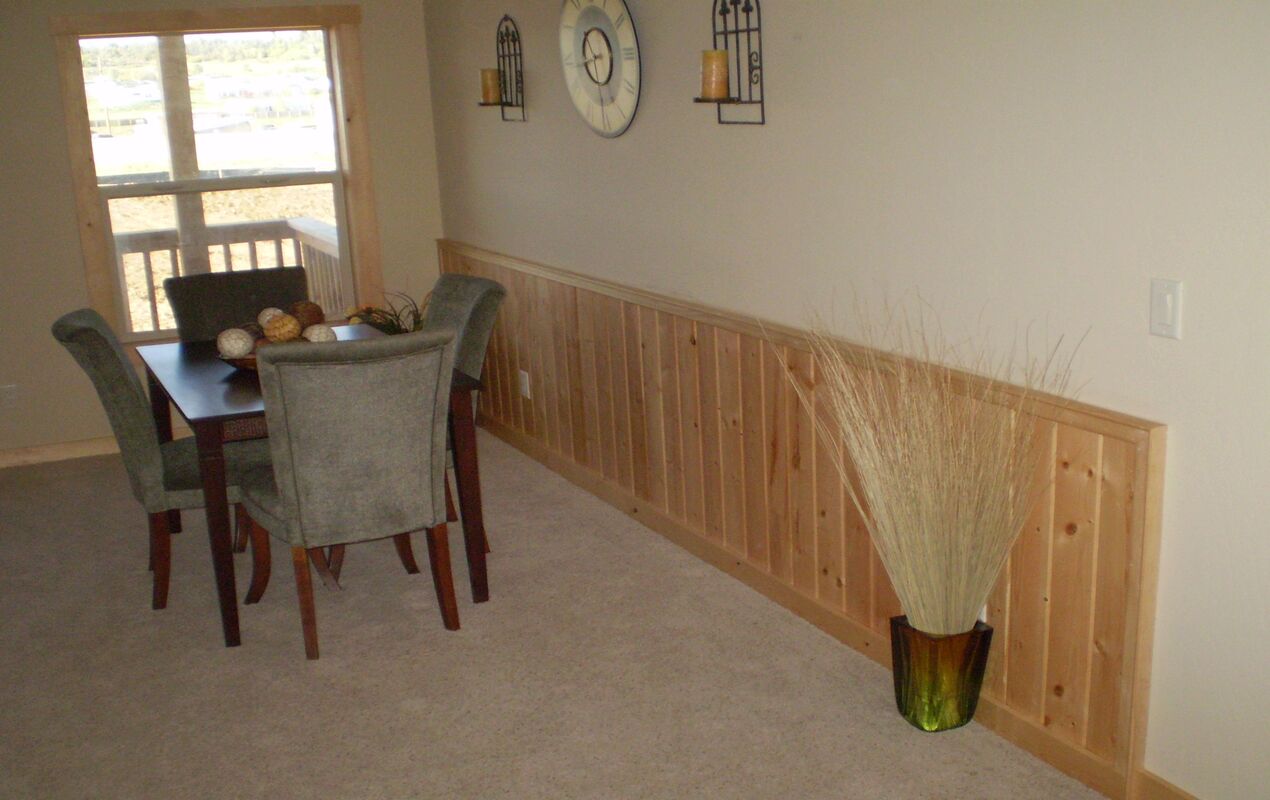
Photo by Pinterest
Tongue and groove wainscoting is a popular architectural feature that gives interior spaces a rustic aura. Singular wooden panels with a protrusion on one side and a groove or slot on the other make up this type of Wainscoting. A snug union is created when the tongue on one panel seamlessly interlocks with the groove on the neighboring panel. Tongue & groove, renowned for its strength and capacity to survive the test of time, not only adds ornamental allure to walls but also offers practical benefits, and also including protection against scuffs, dents, and wear.
19. Embossed Drywall
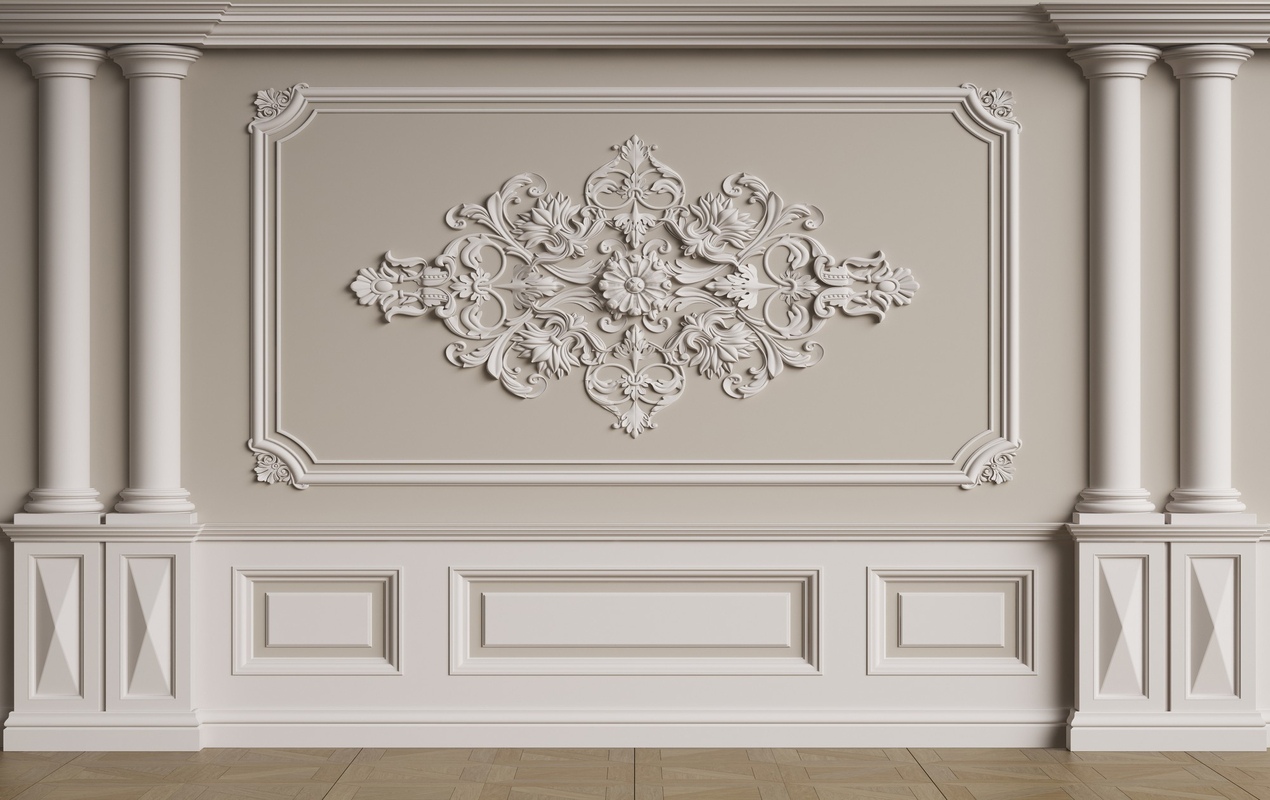
Photo by remuhin from Freepik
This style adds a touch of grandeur and sophistication by deftly stamping raised patterns into drywall panels. The design options spread wide, from traditional and time-honored motifs to modern and artistic interpretations, fostering limitless creativity. the Ordinary walls are transformed into intriguing focal points that exude beauty and flair thanks to the textured surface of embossed drywall.
20. Rustic Wainscoting
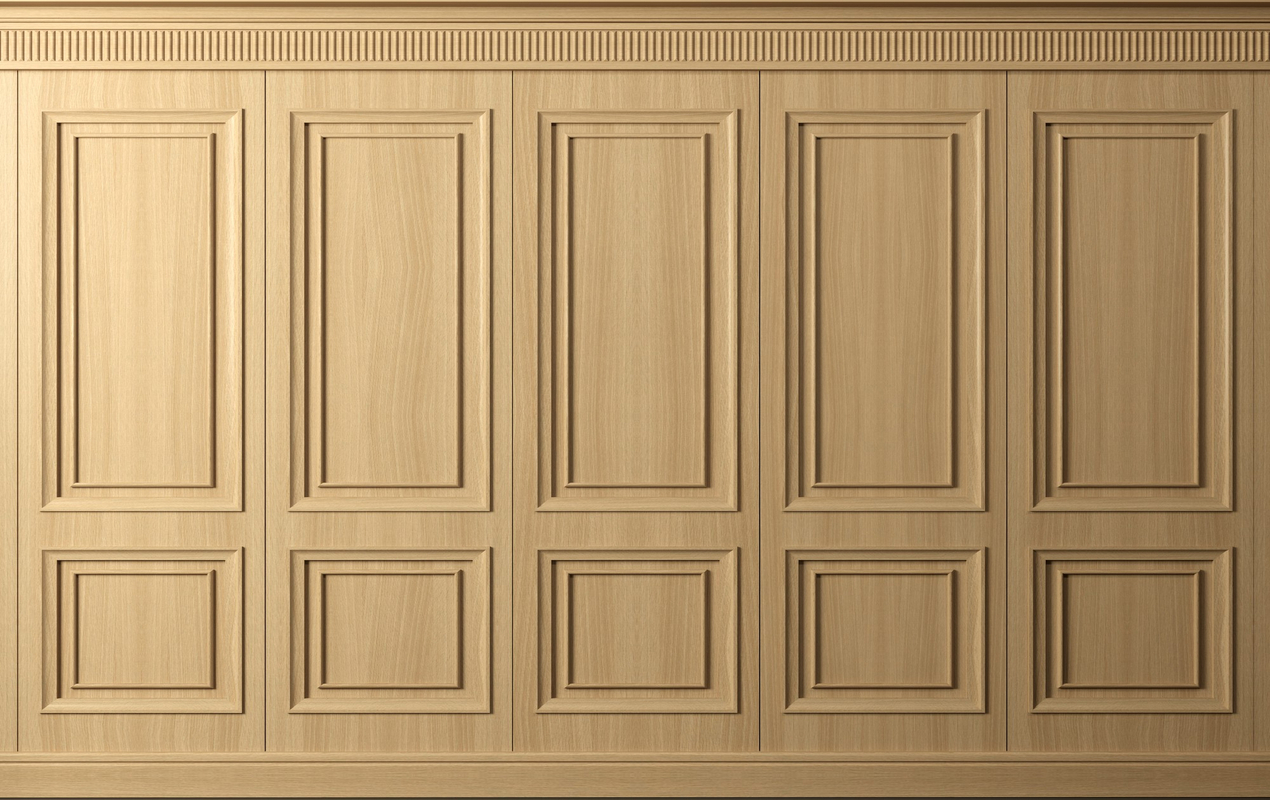
Photo by denisik11 from Freepik
Rustic options embody the essence of tradition, blending the raw beauty of natural wood with meticulous craftsmanship to fashion an enduring visual allure. Its defining characteristic lies in its weathered and rough-hewn facade, exuding an unmistakable rustic charm that resonates with authenticity. Utilizing reclaimed or distressed wood, the panels proudly display the innate grains and flaws that enhance its rustic appeal, creating a captivating tapestry of imperfections.
21. Two-Tone Wainscoting
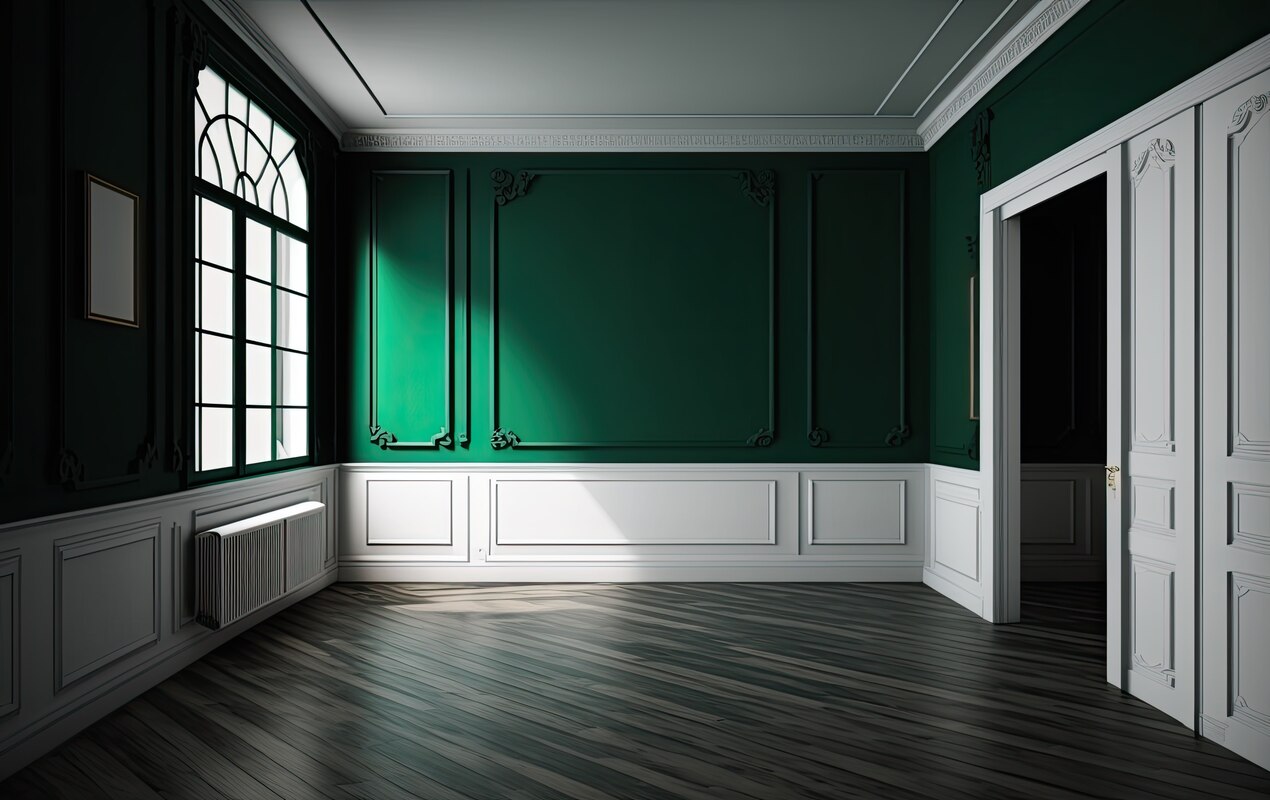
Photo by user27955914 from Freepik
Embraced by interior design enthusiasts far and wide, the captivating allure of the two-tone concept has become a vibrant trend. This enchanting design dances with splendor and enlightenment as two contrasting colors intertwine to create a mesmerizing visual symphony. A darkened shade envelops the lower section’ of the wall, effortlessly juxtaposed against a lighter hue that adorns the upper section. This striking interplay of colors bestows the room with depth and dimension and stands as an artful ornamentation in its own right.
22. Fabric Wainscoting
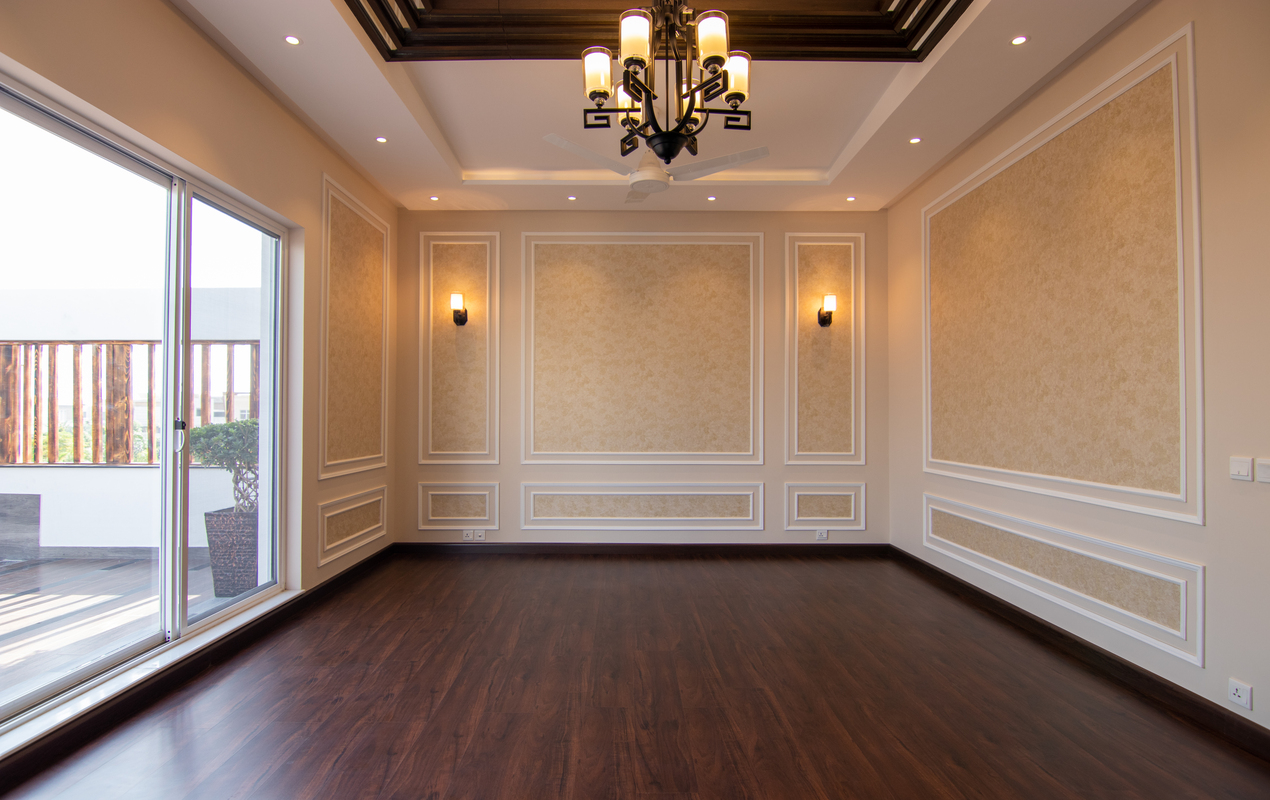
Photo by user10088638 from Freepik
A lovely alternative to traditional wood or tile alternatives, fabric wainscoting, provides a sense of grace and refinement. Using this technique, the lower section of the wall is decorated with carefully chosen fabrics that rise to chair rail height, creating a seamless marriage of comfort and design. Fabric wainscoting is a captivating addition to any space, whether you choose a soft texture, an eye-catching pattern, or a deep shade.
Final Thoughts
Wainscoting ideas present an enduring and graceful answer to enriching the visual allure of any room. Whether your taste leans towards the traditional or contemporary. Wainscoting offers a flexible solution to amplify the aesthetic impact of walls. The options range from timeless beadboard panels to intricately crafted raised panel designs, opening up a world of limitless possibilities.
Beyond its architectural charm, Wainscoting also serves a practical purpose, safeguarding walls against everyday wear and tear. Its transformative power extends to any space, instantly infusing it with sophistication and warmth. Making Wainscoting a perennial favorite among homeowners and designers alike.

